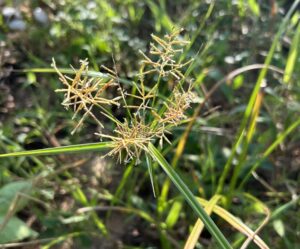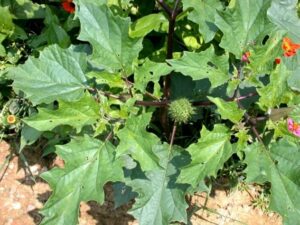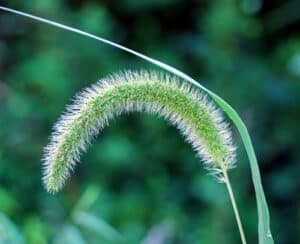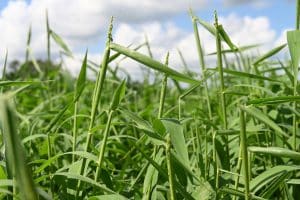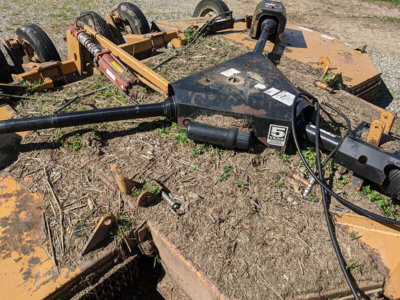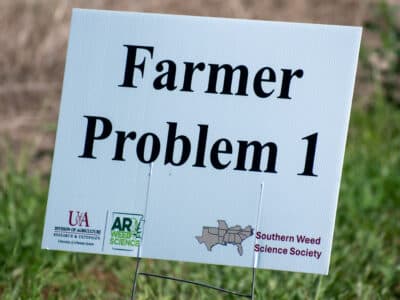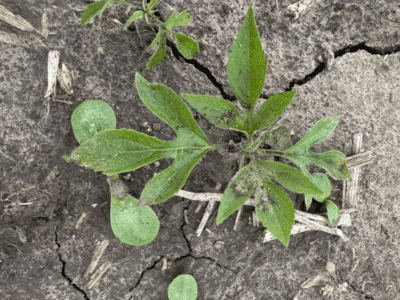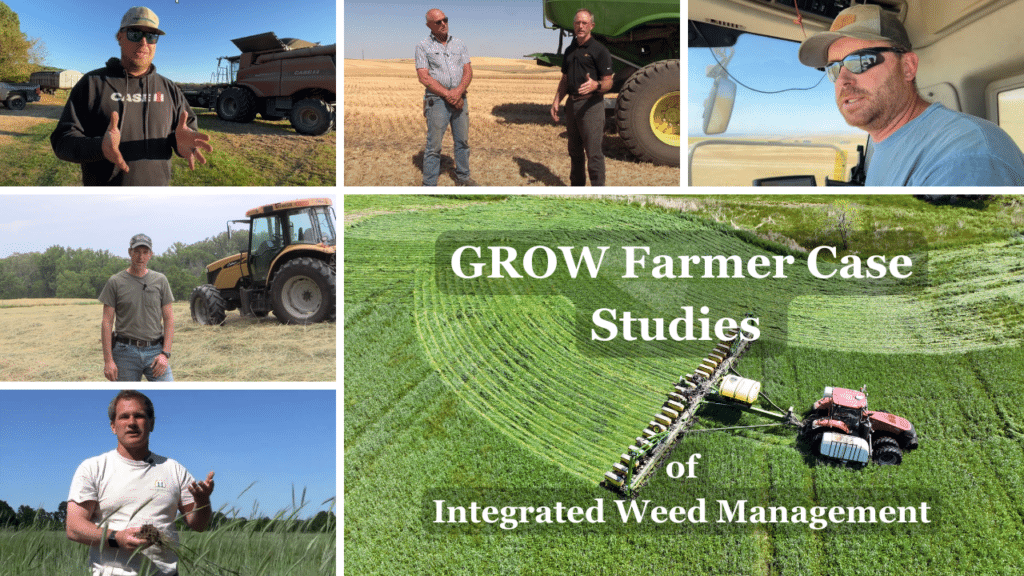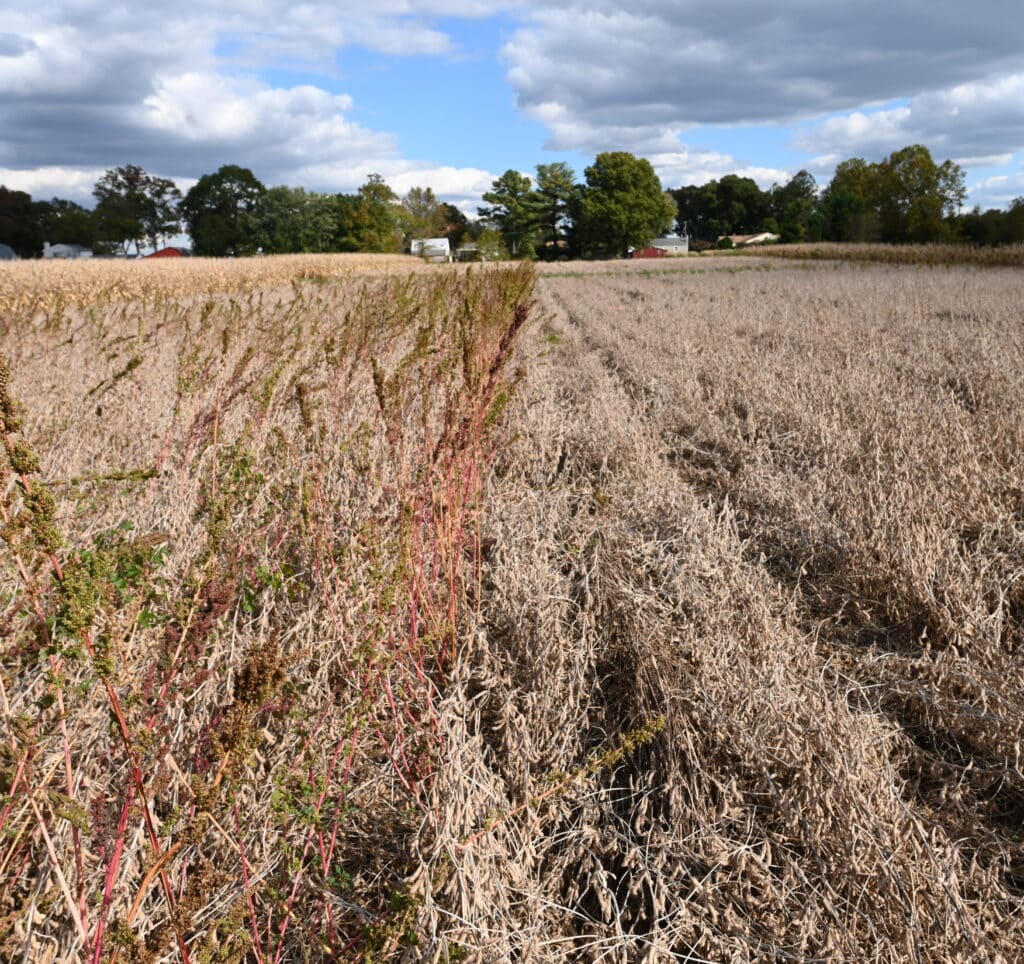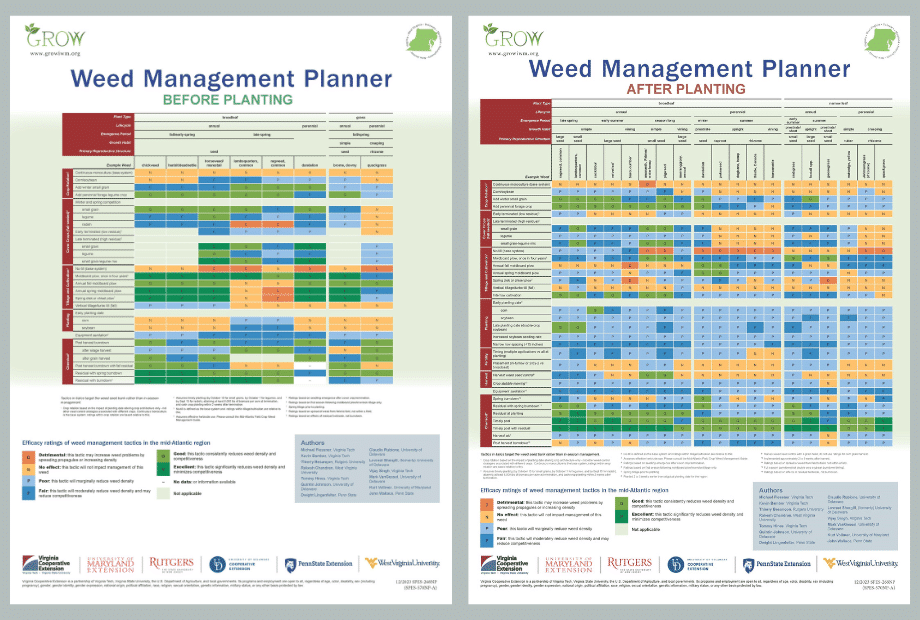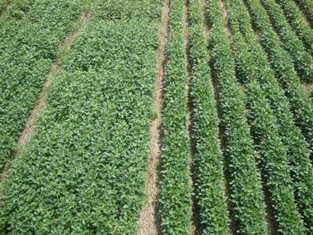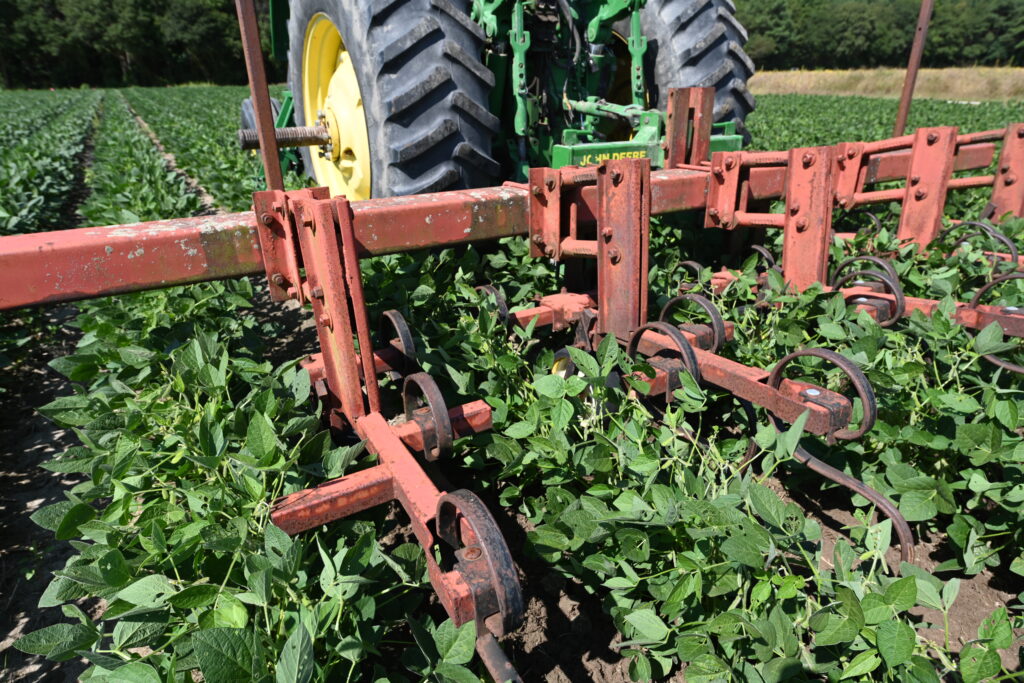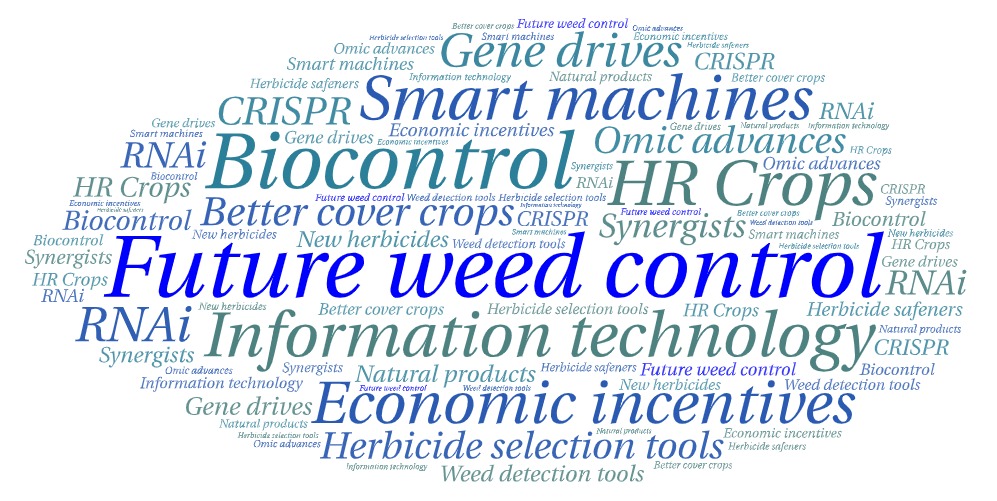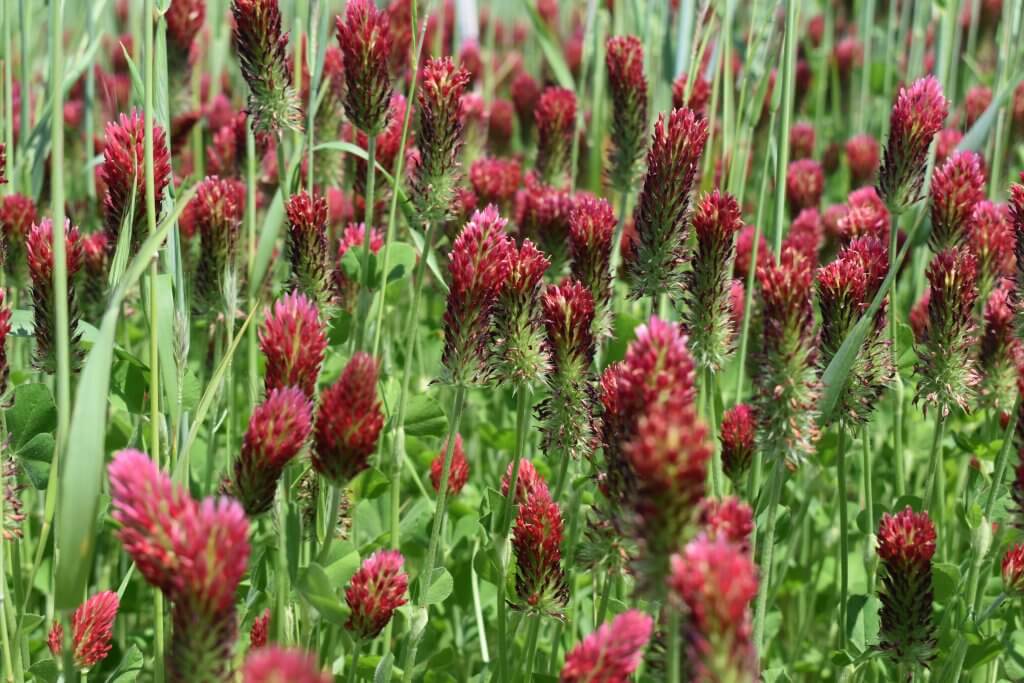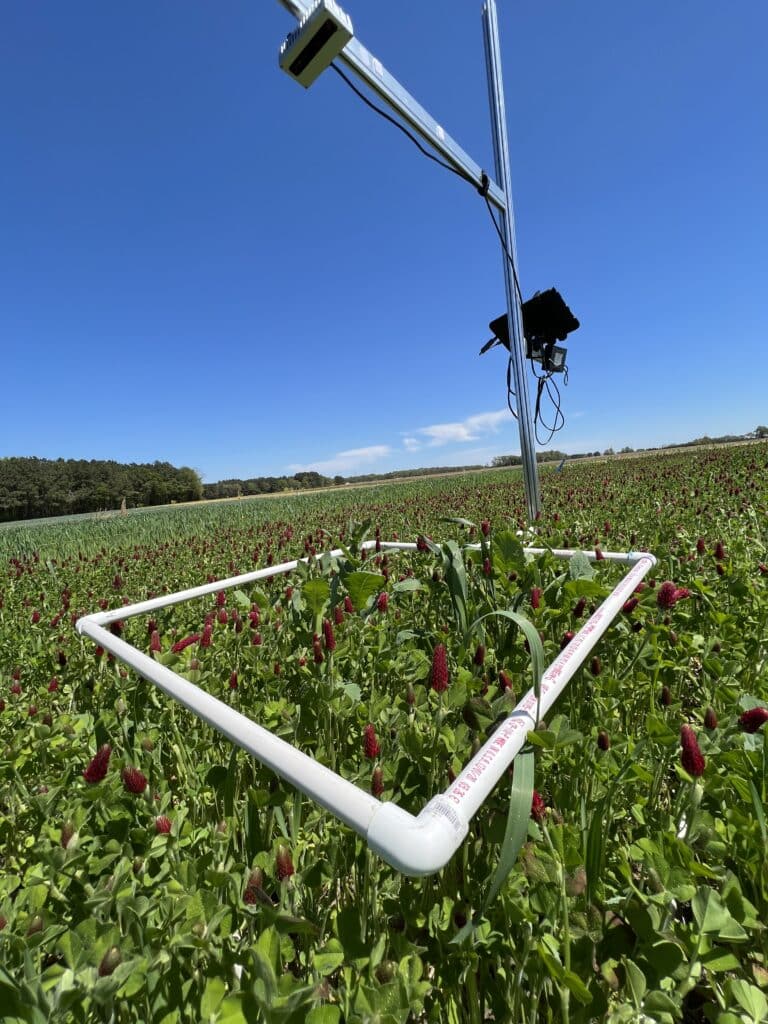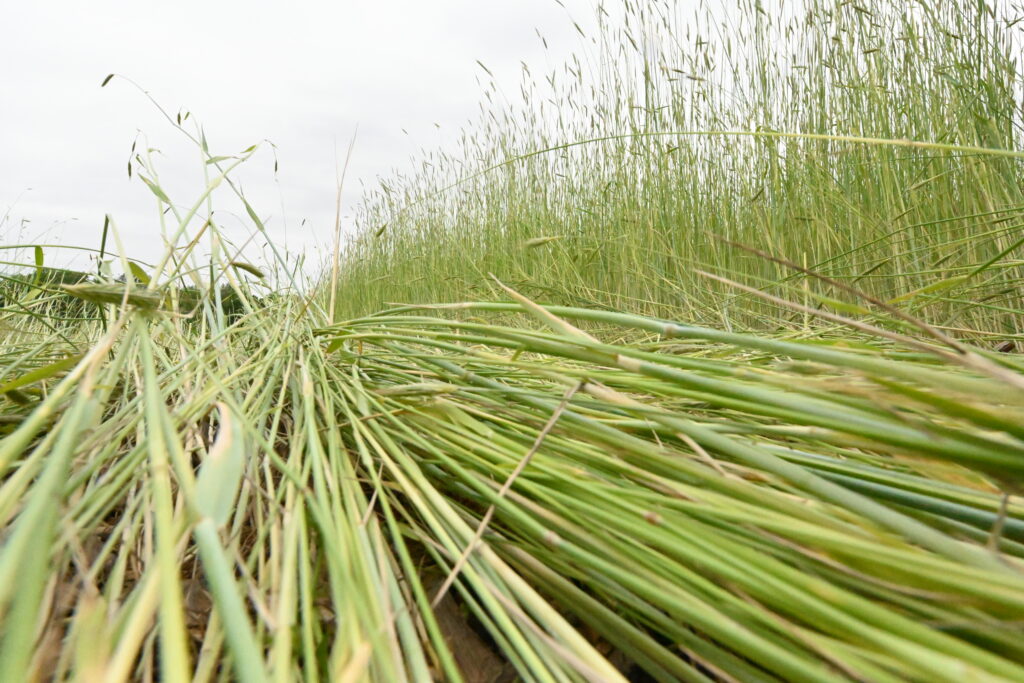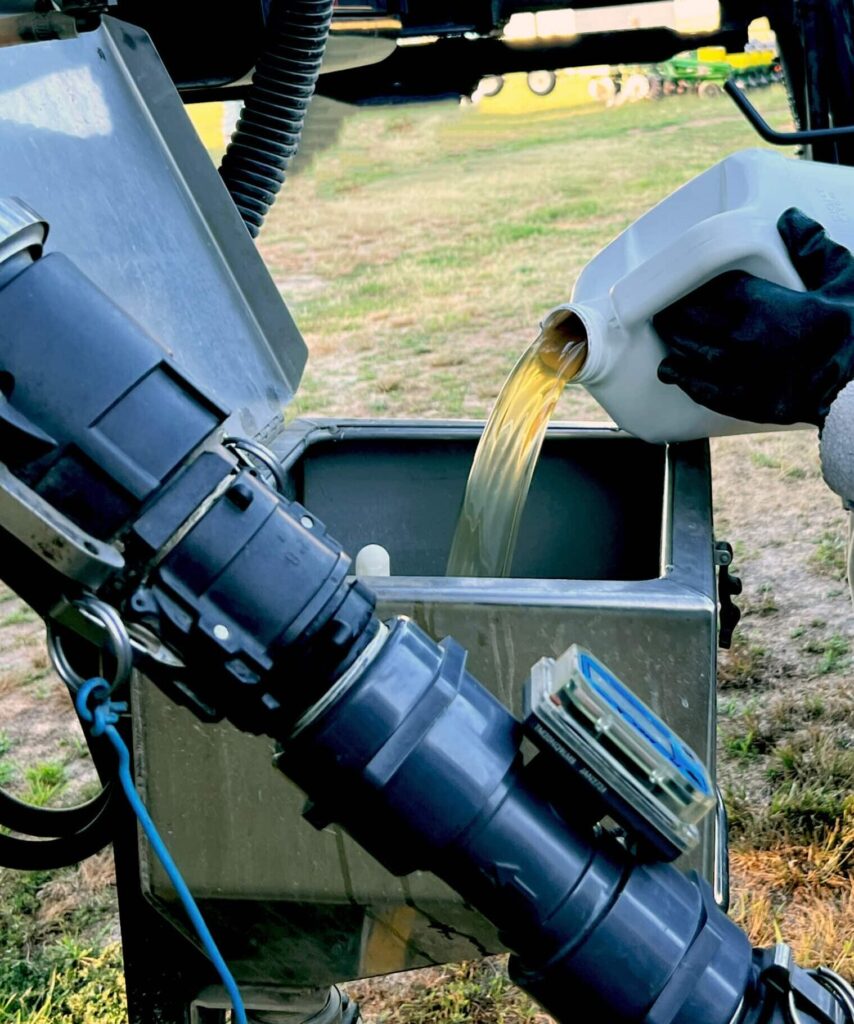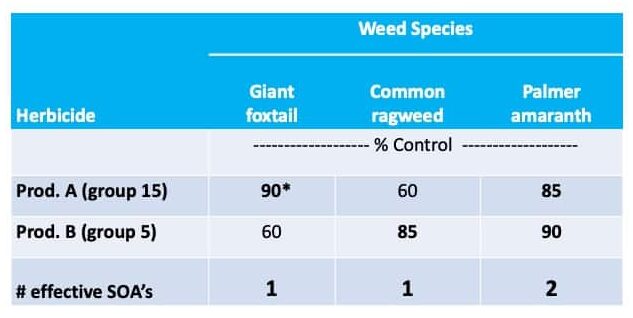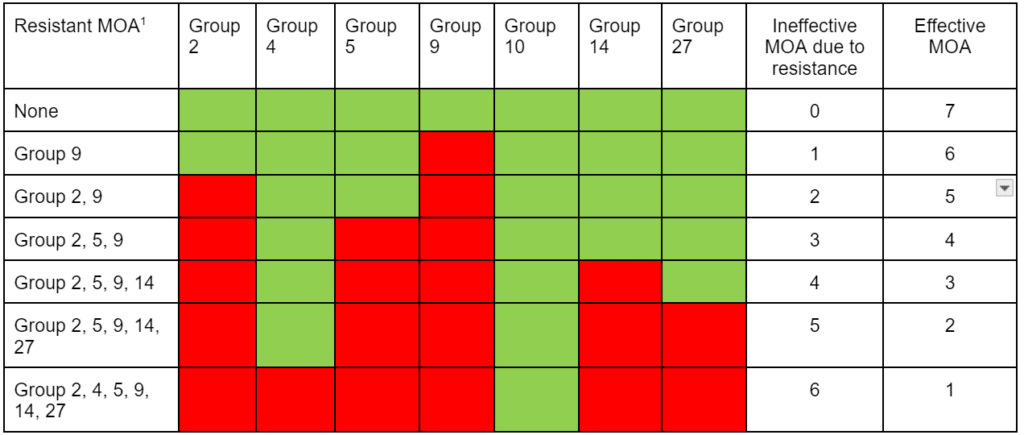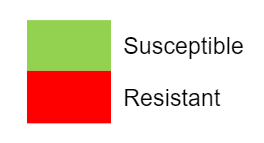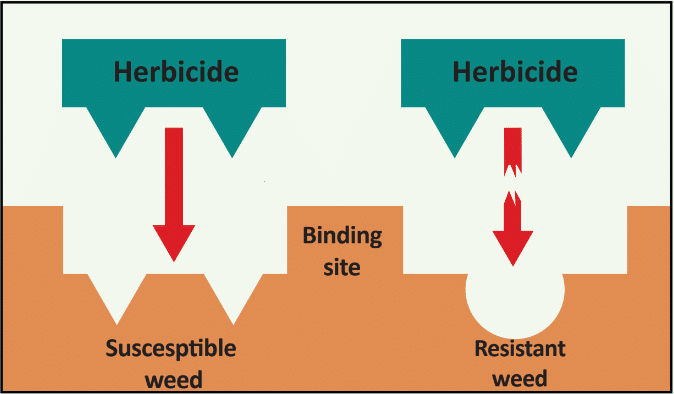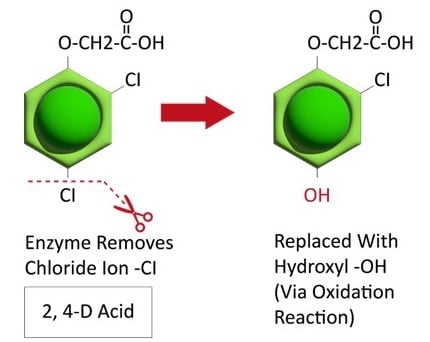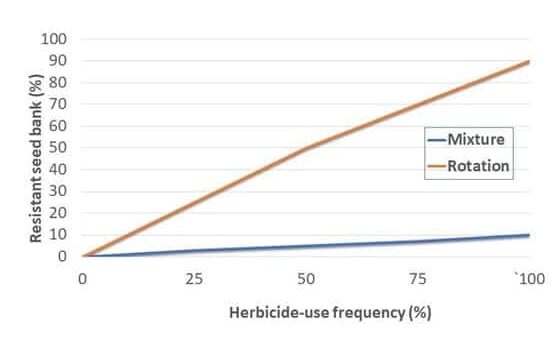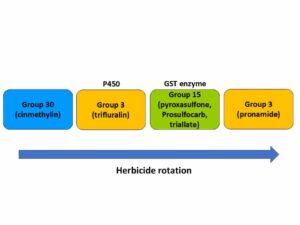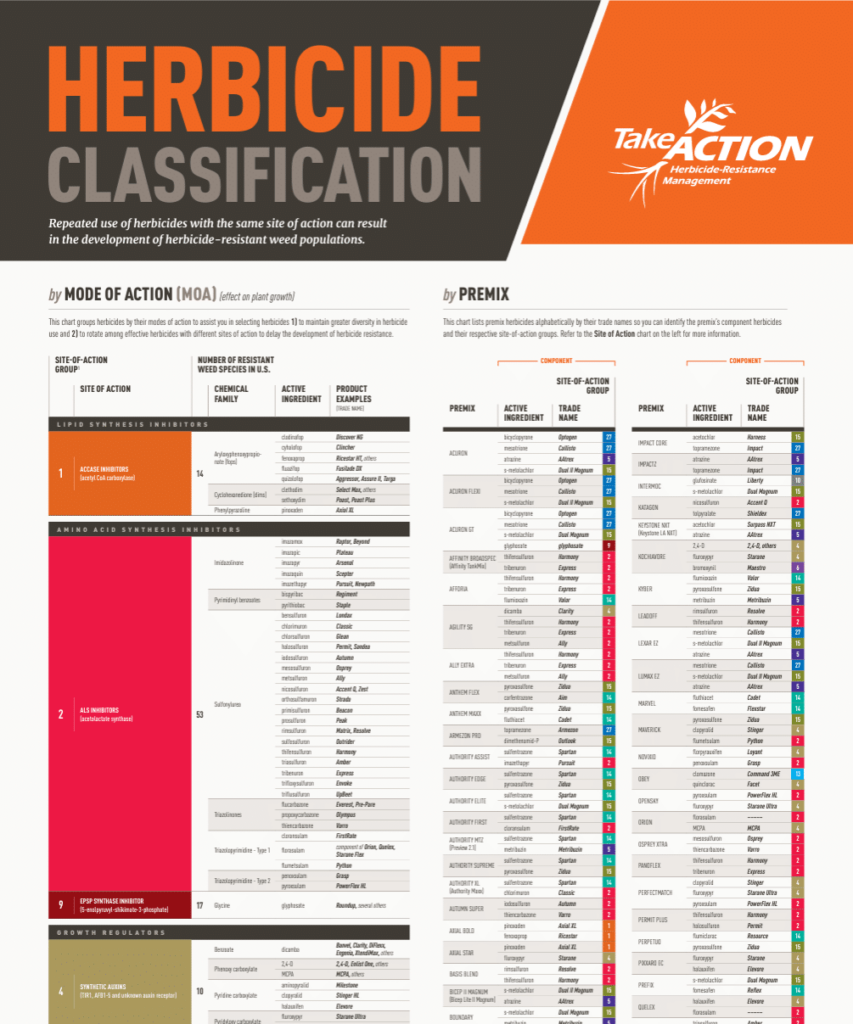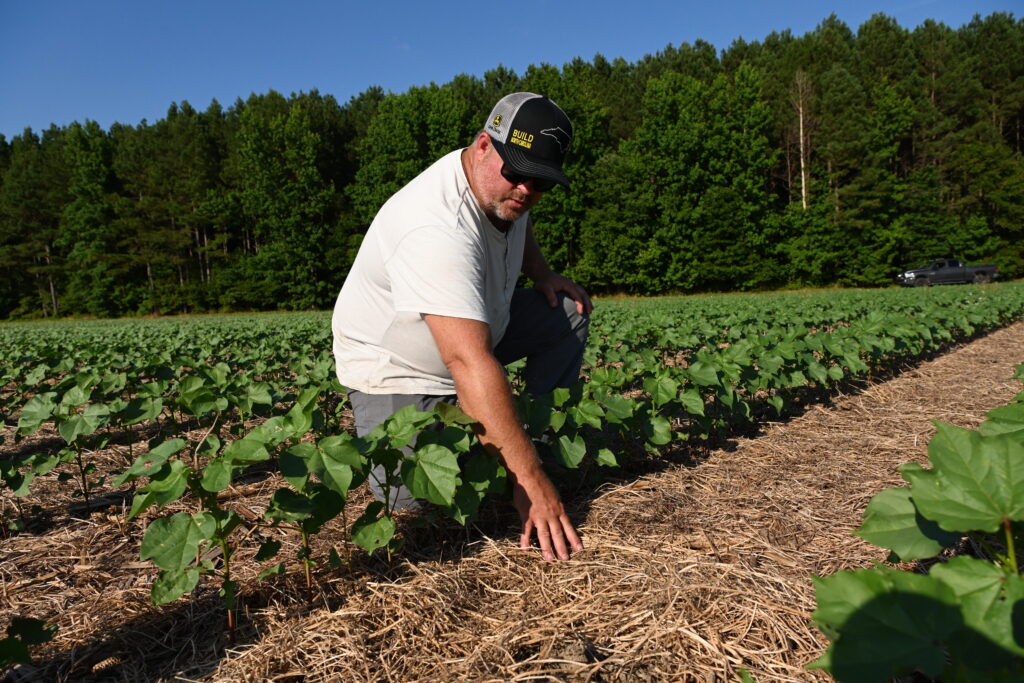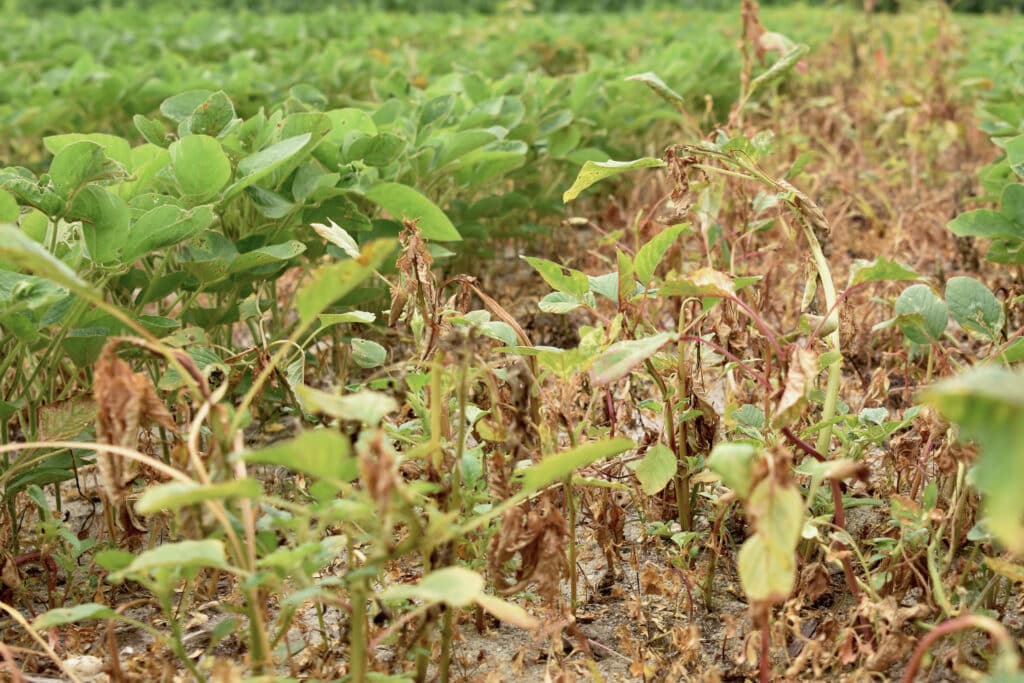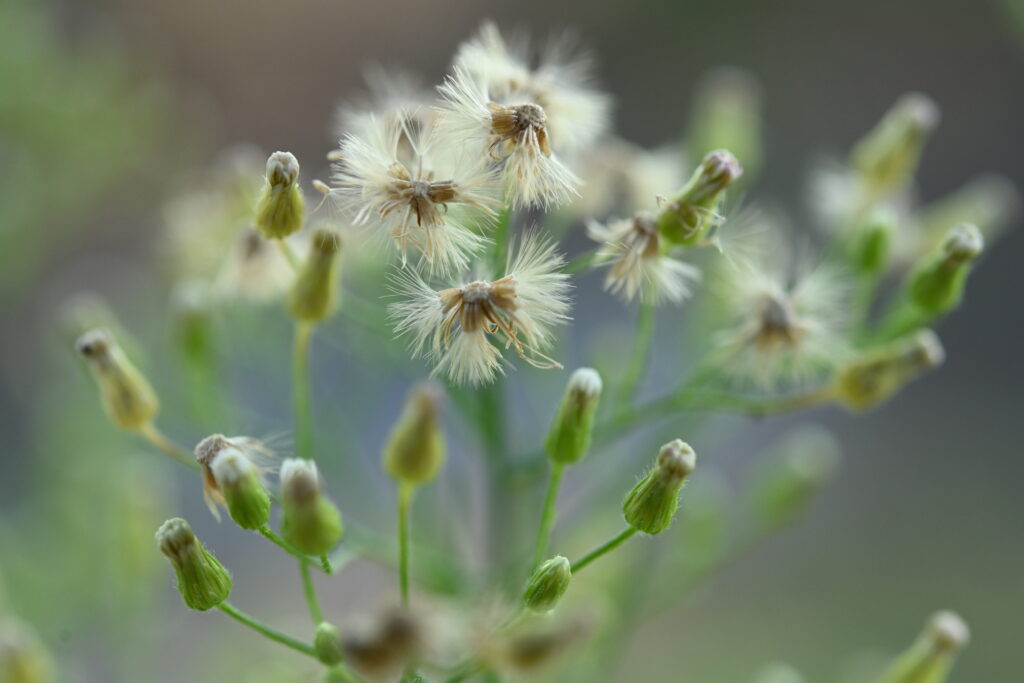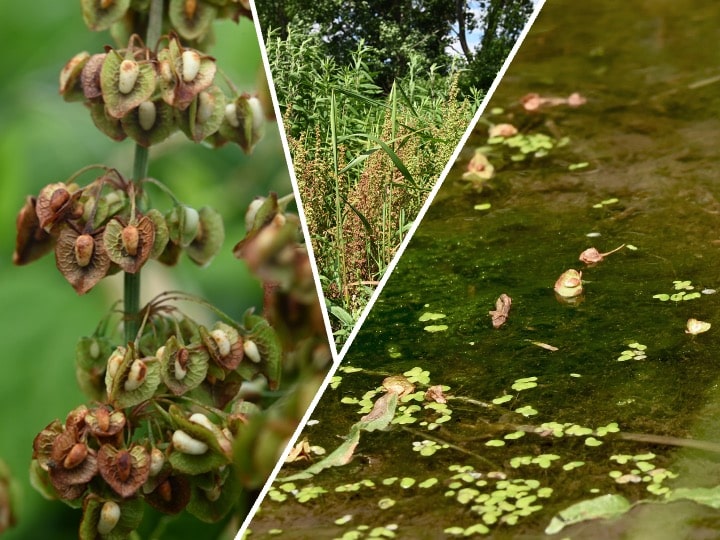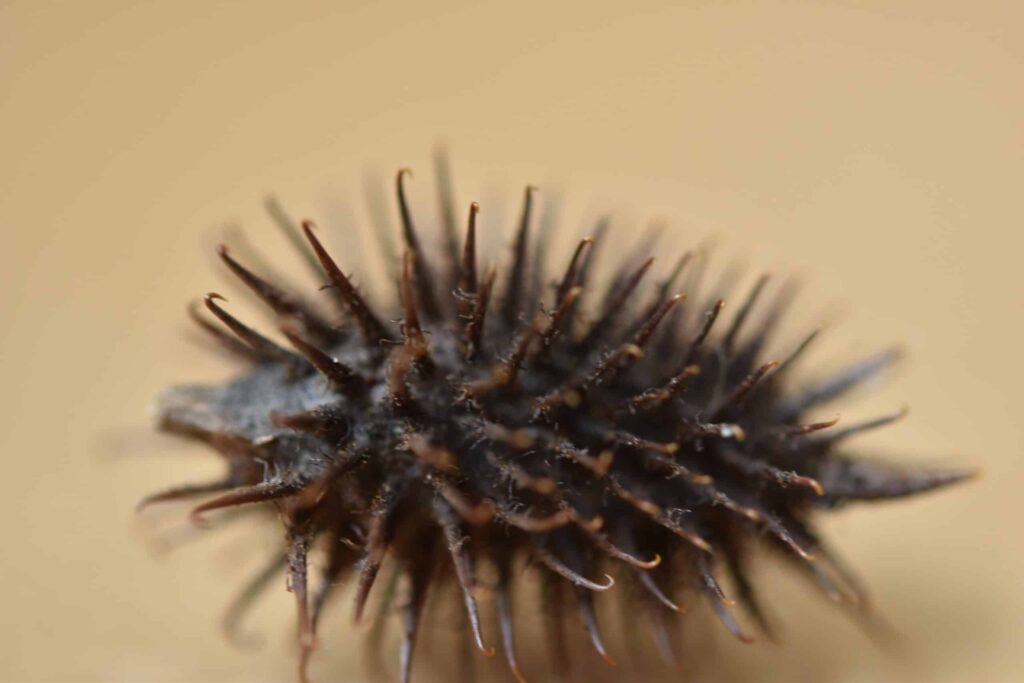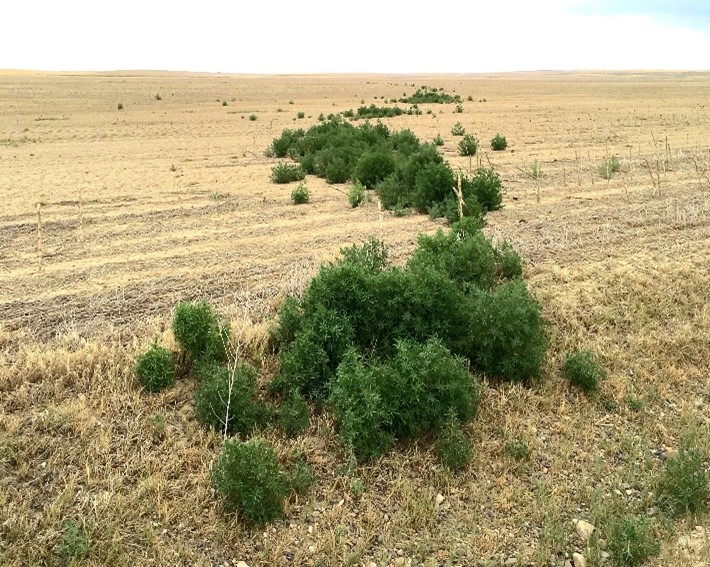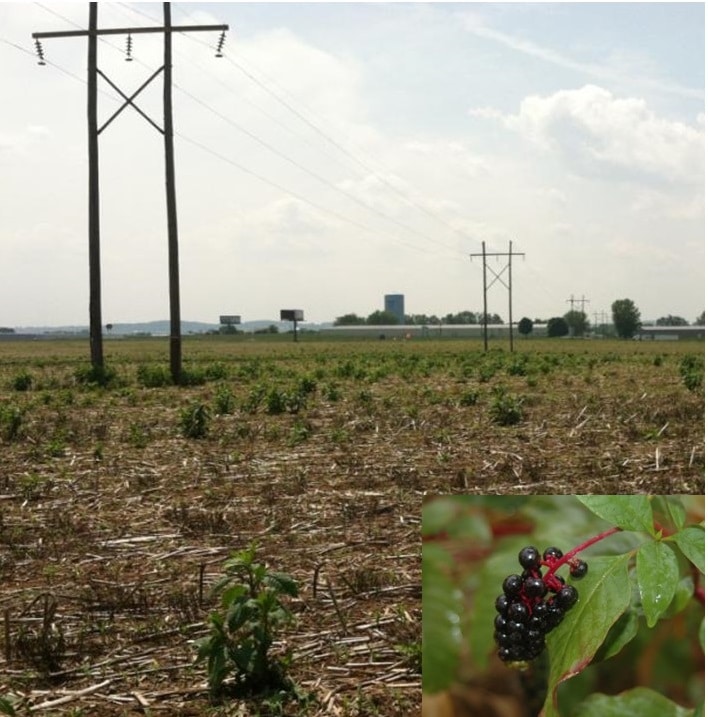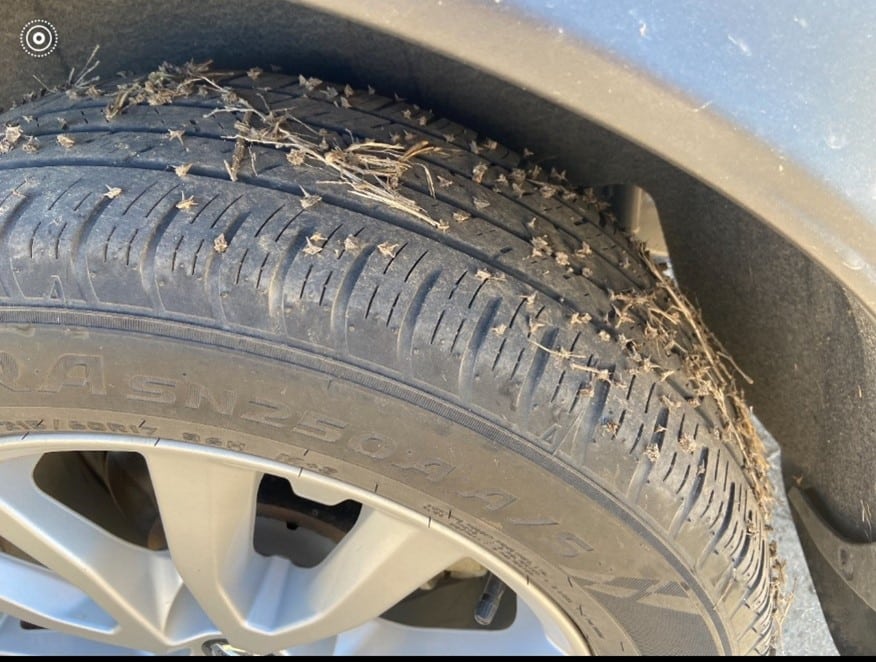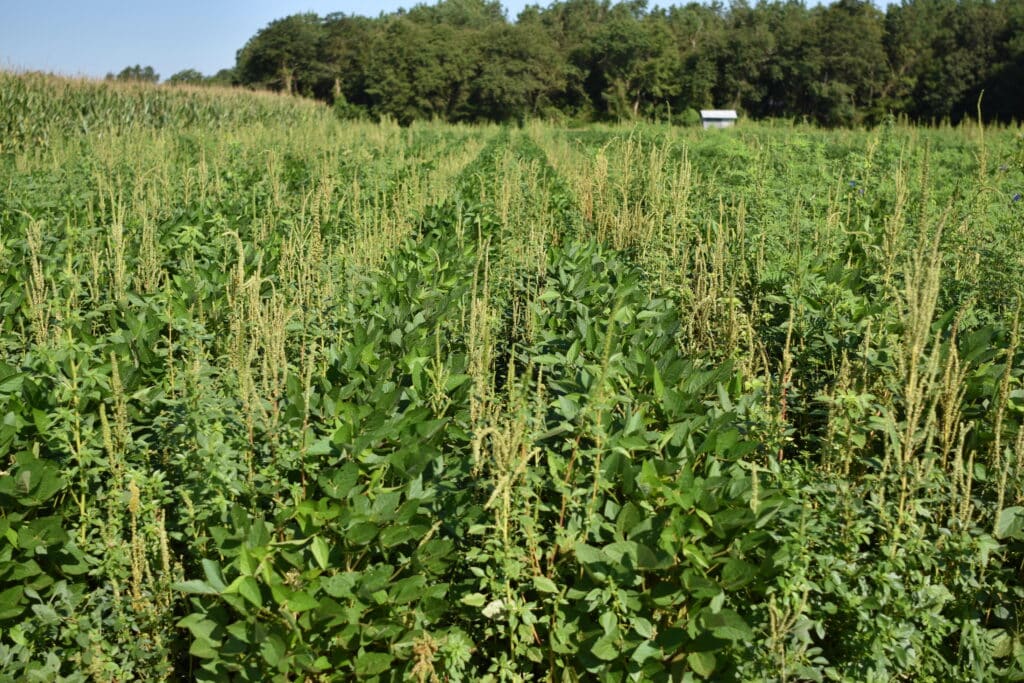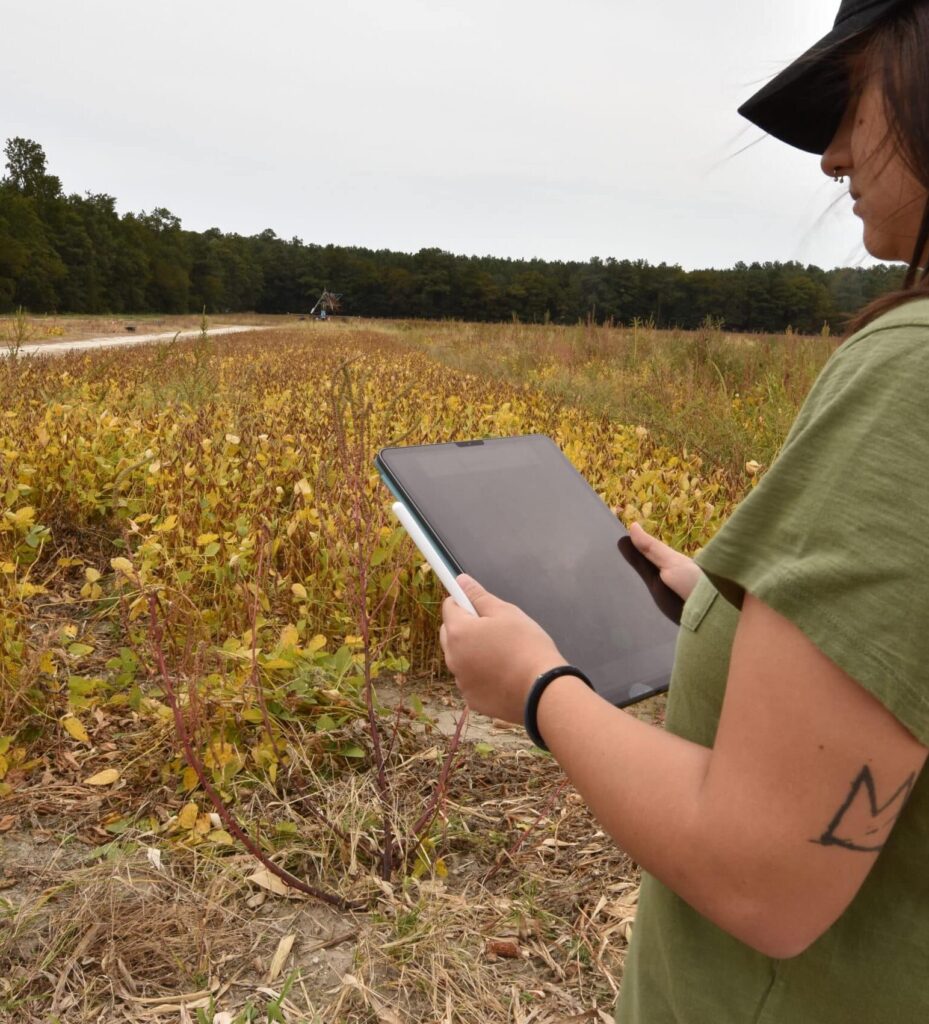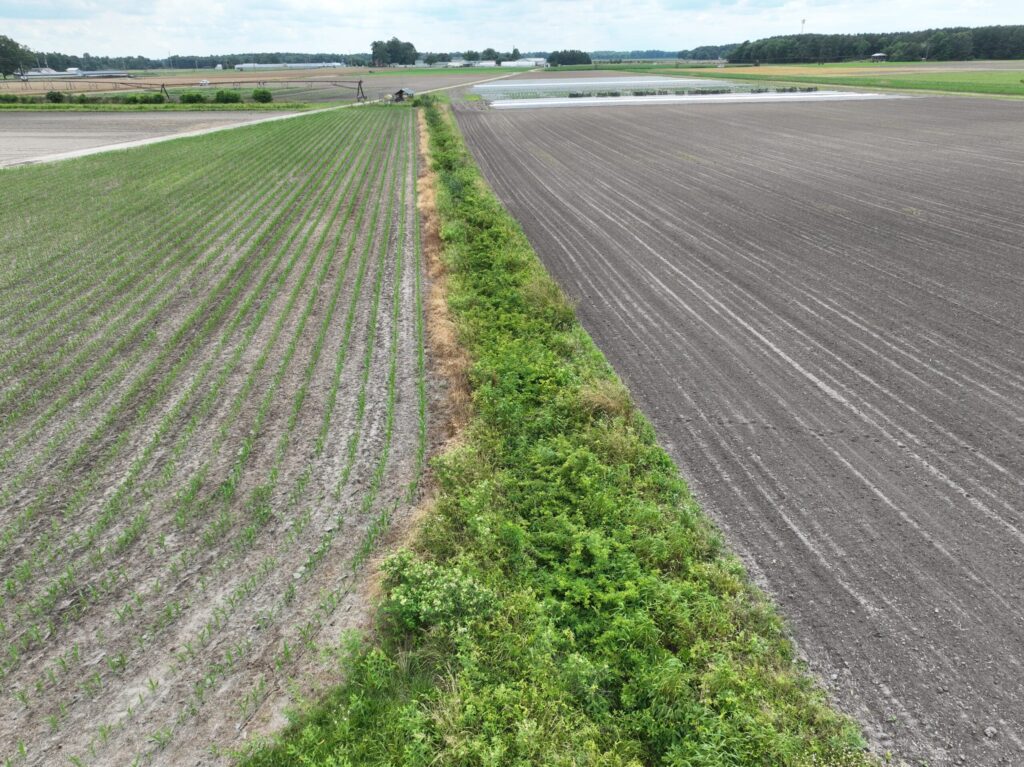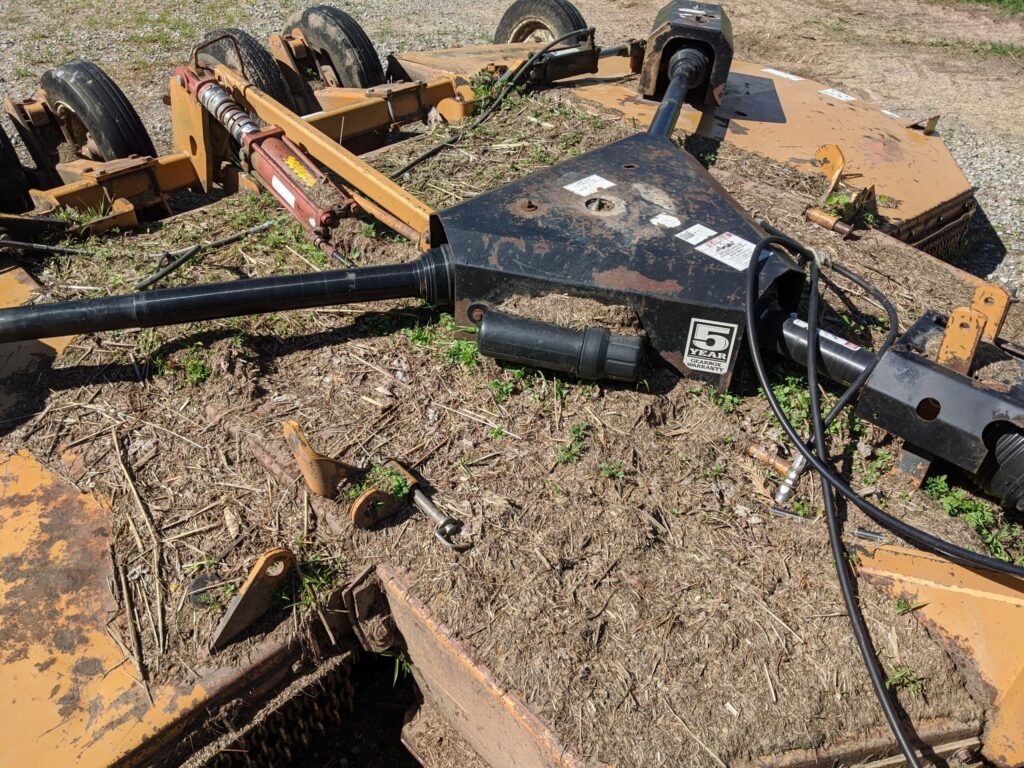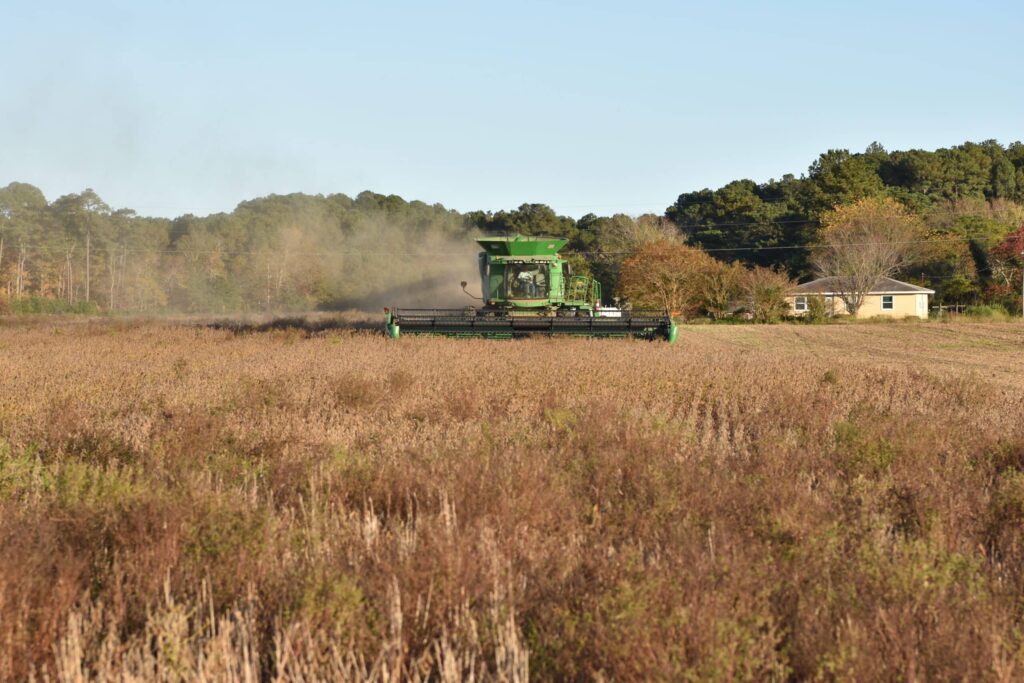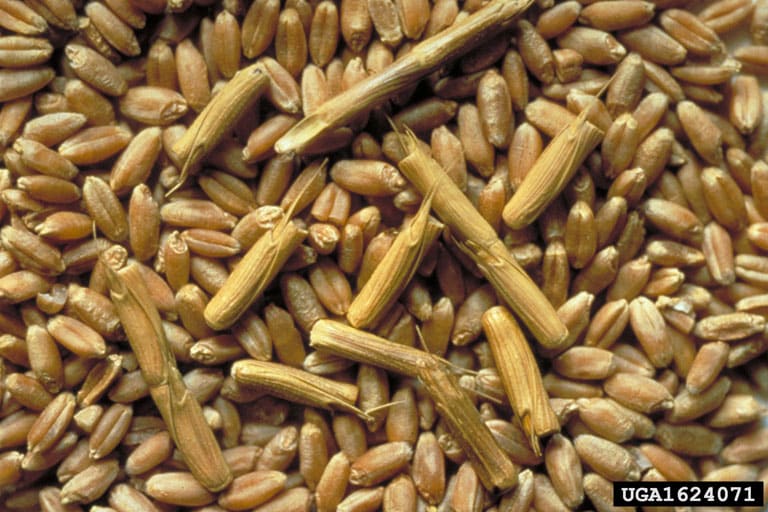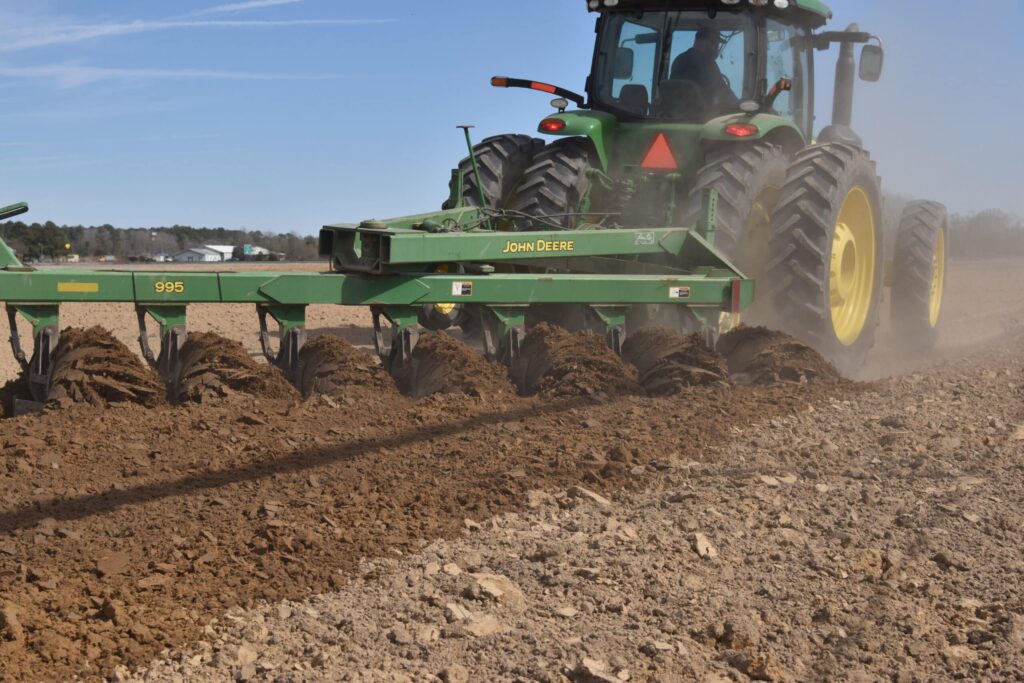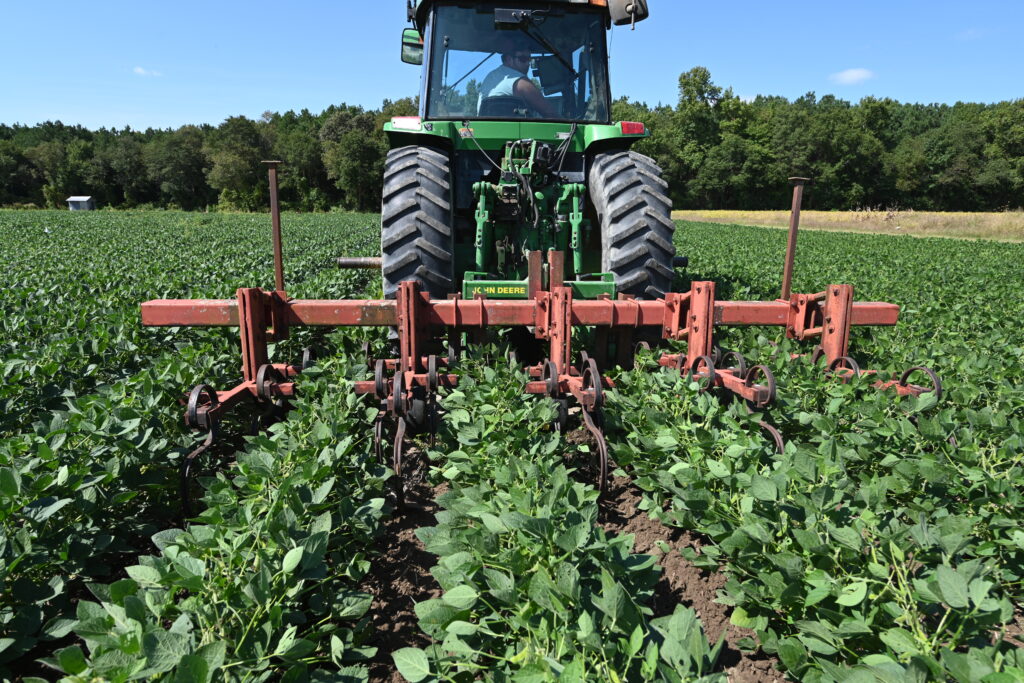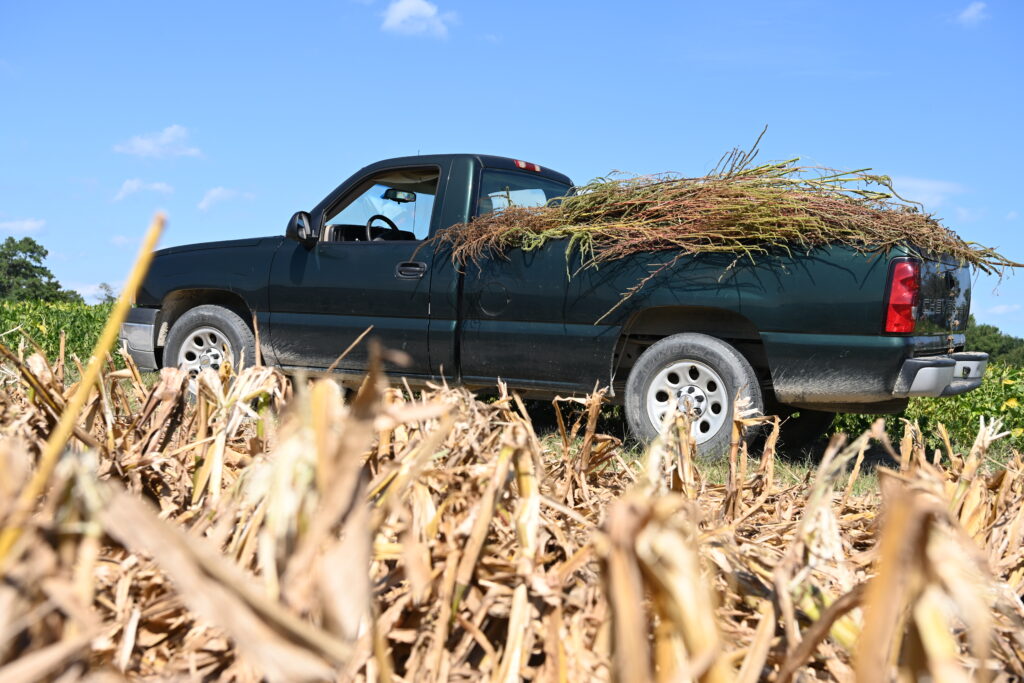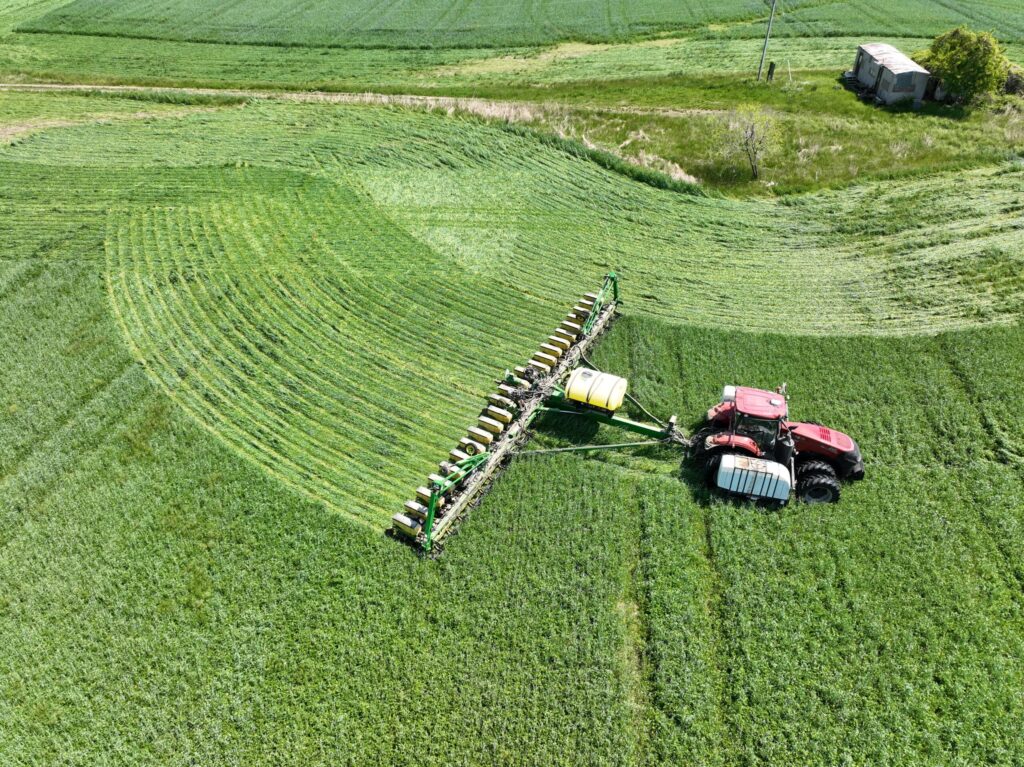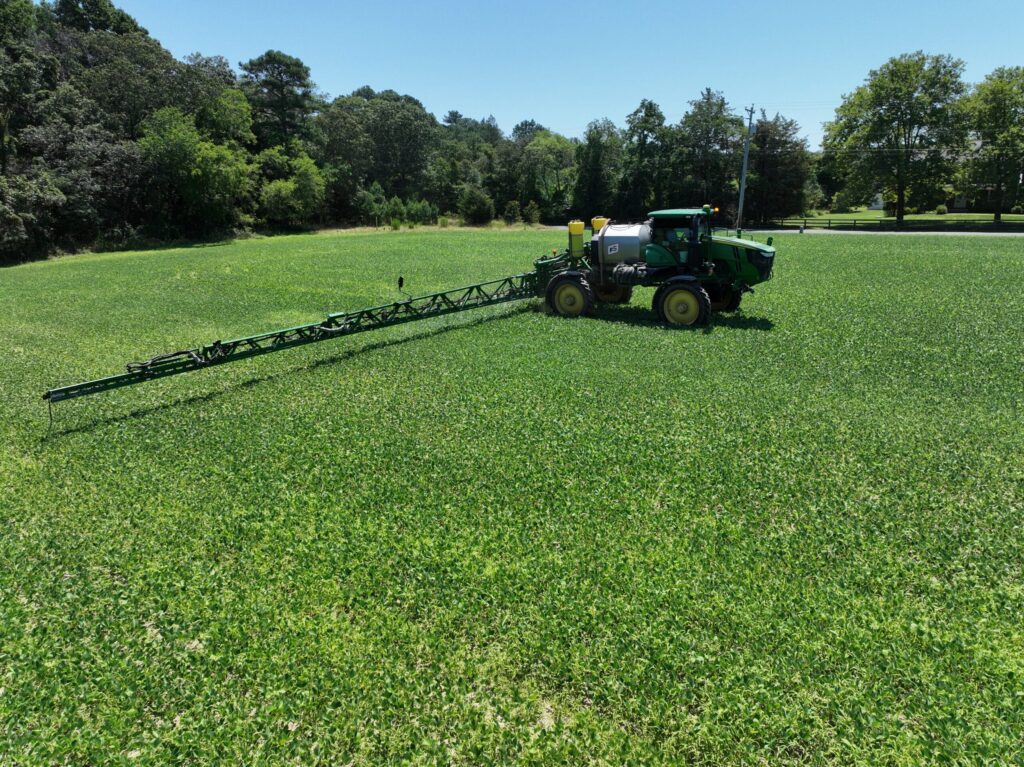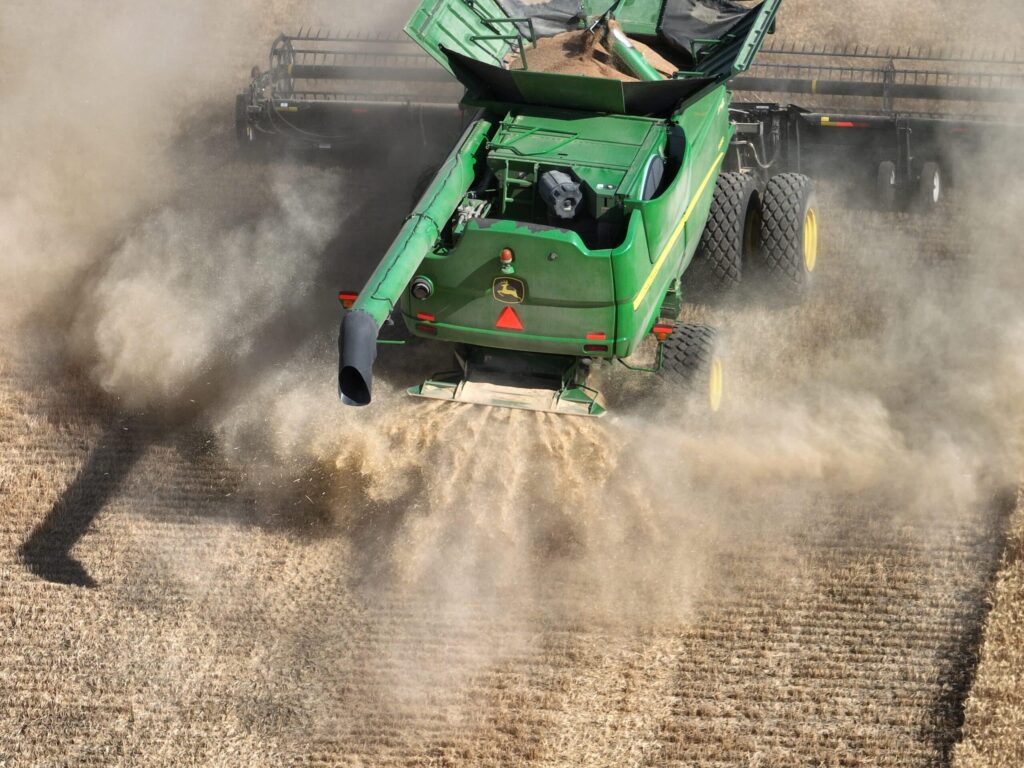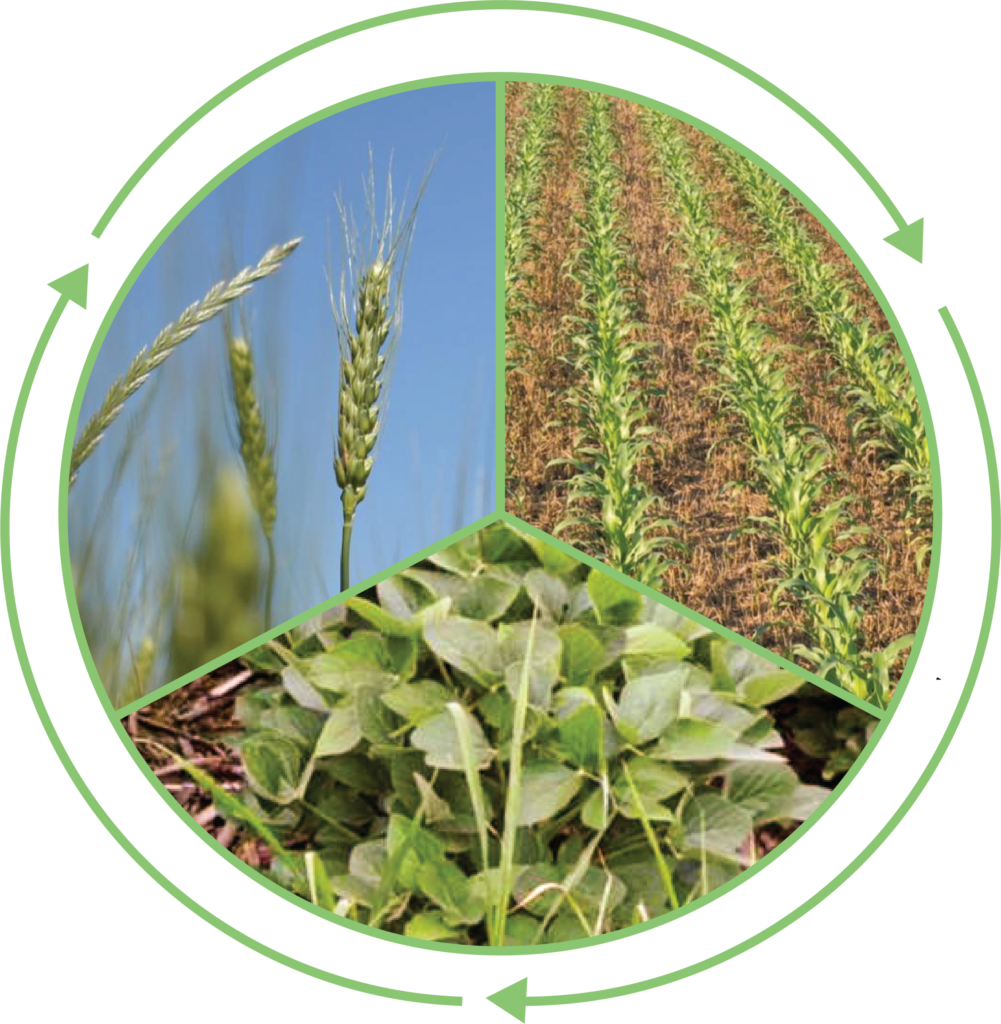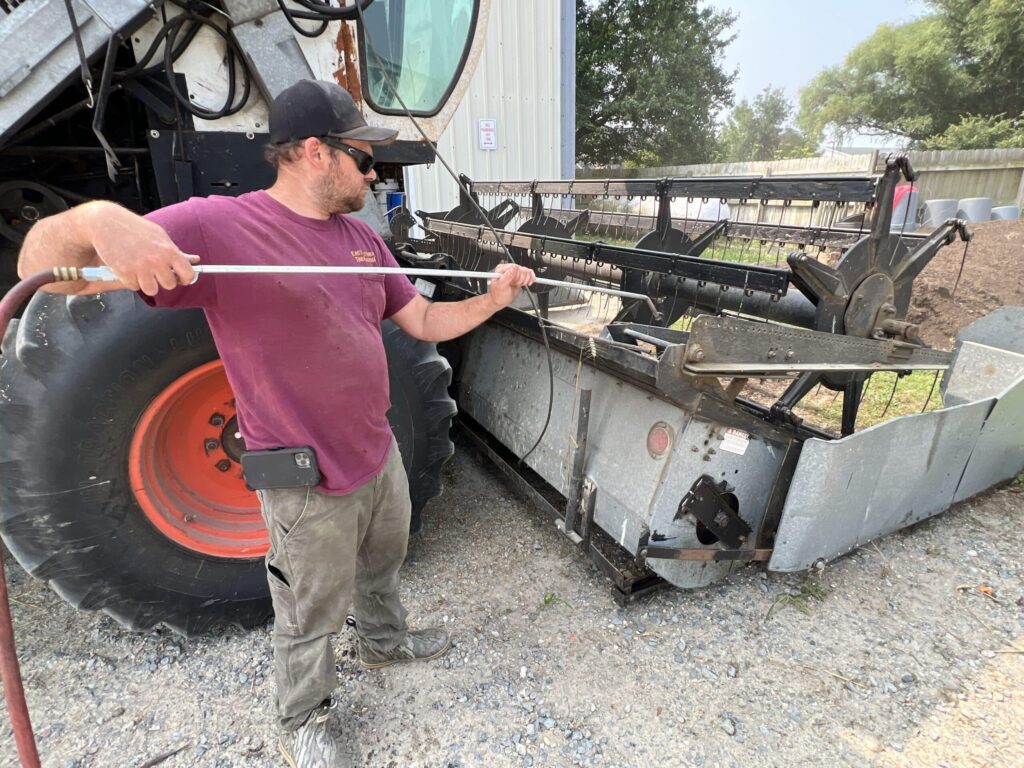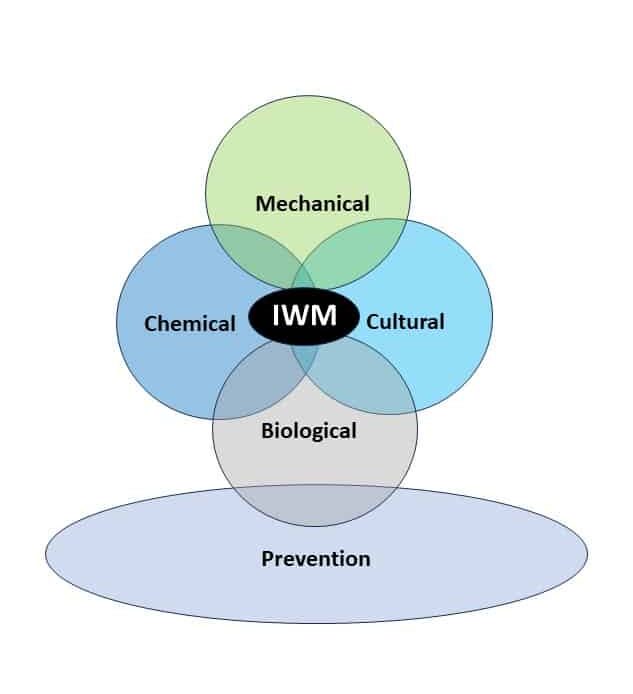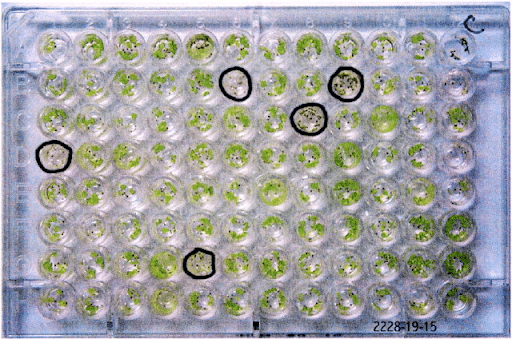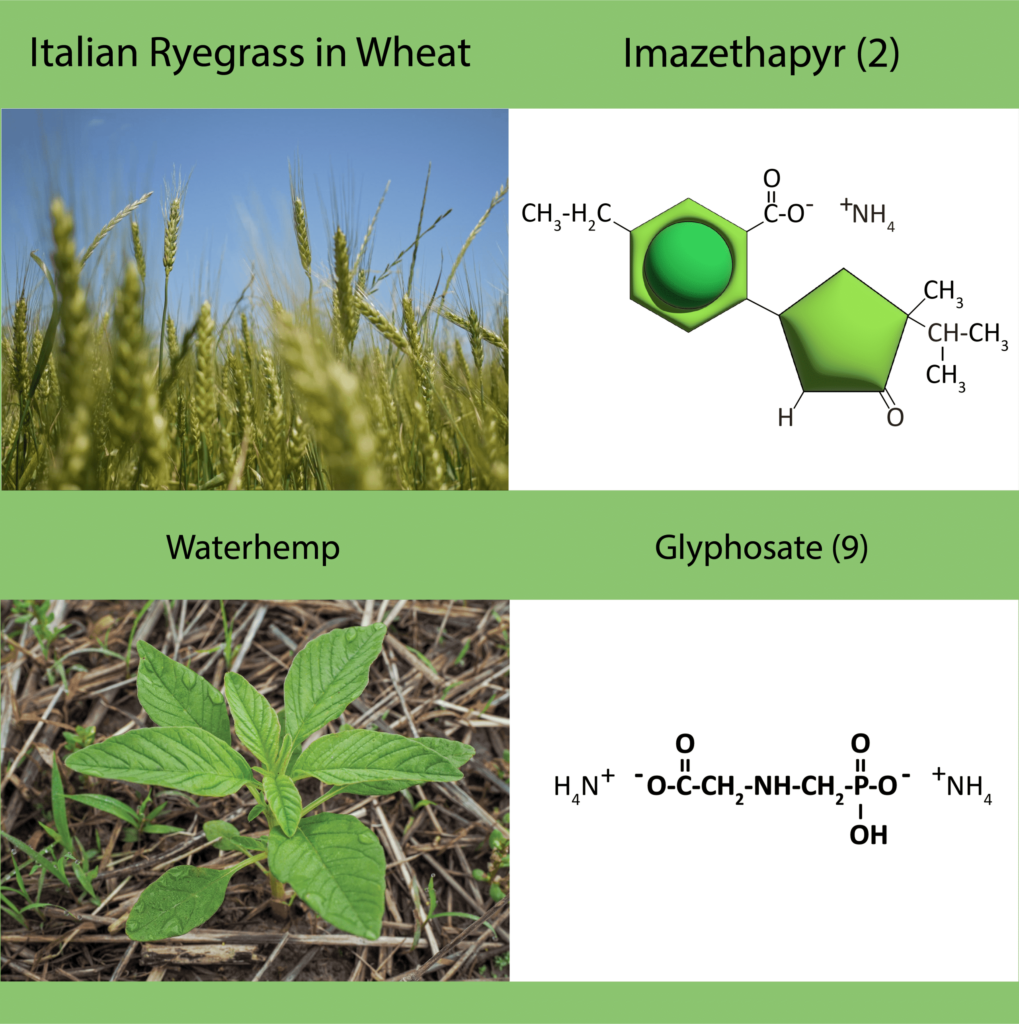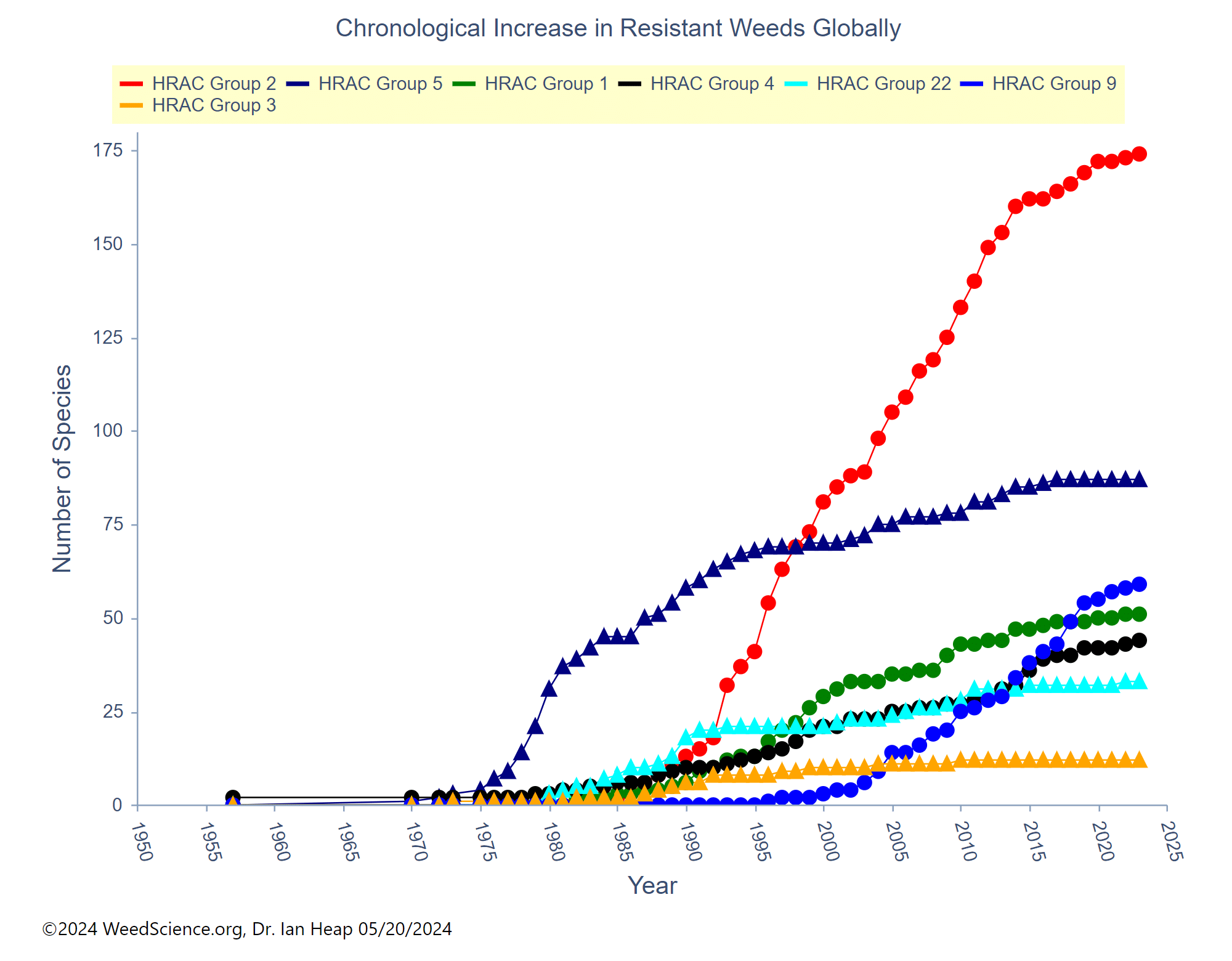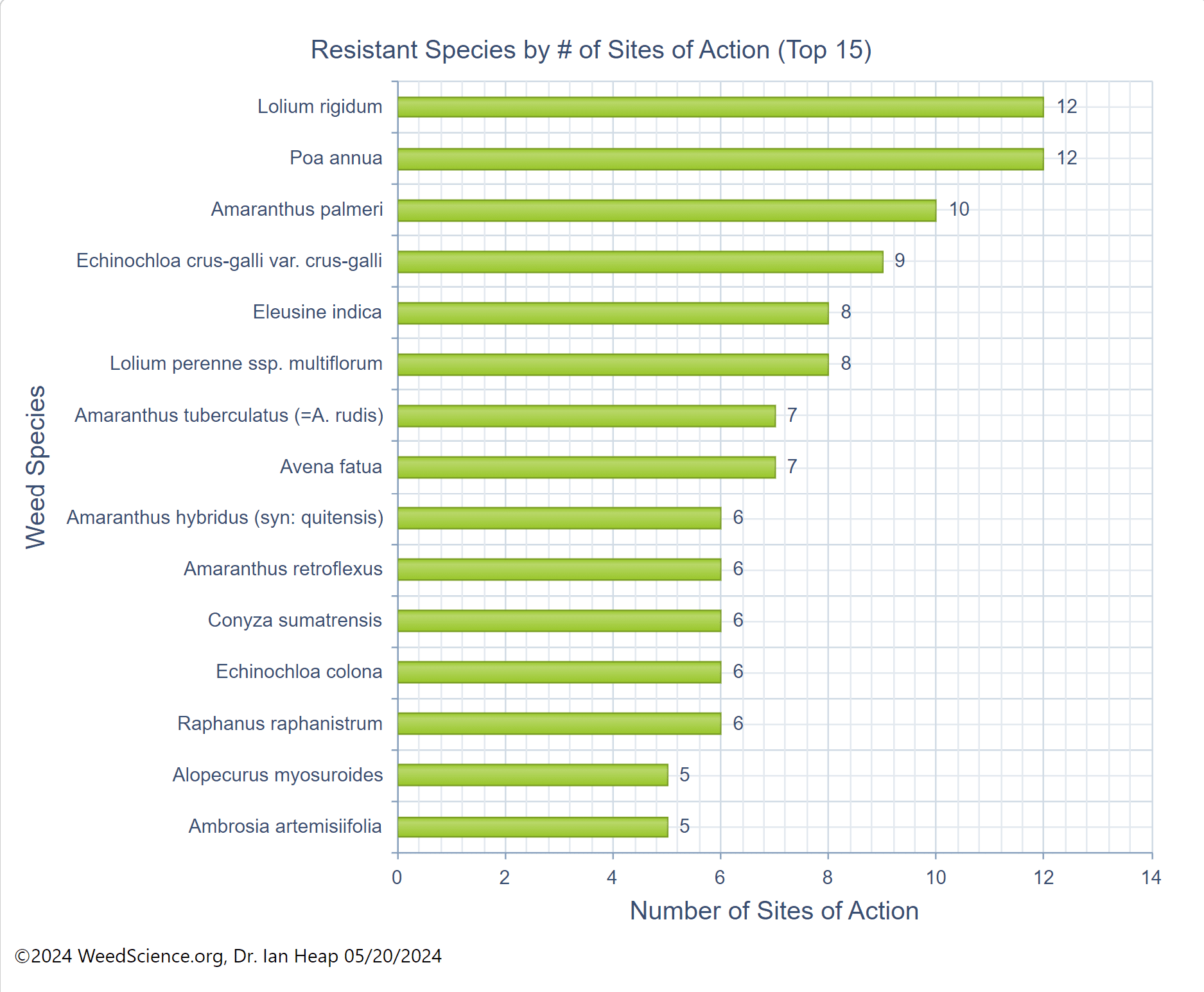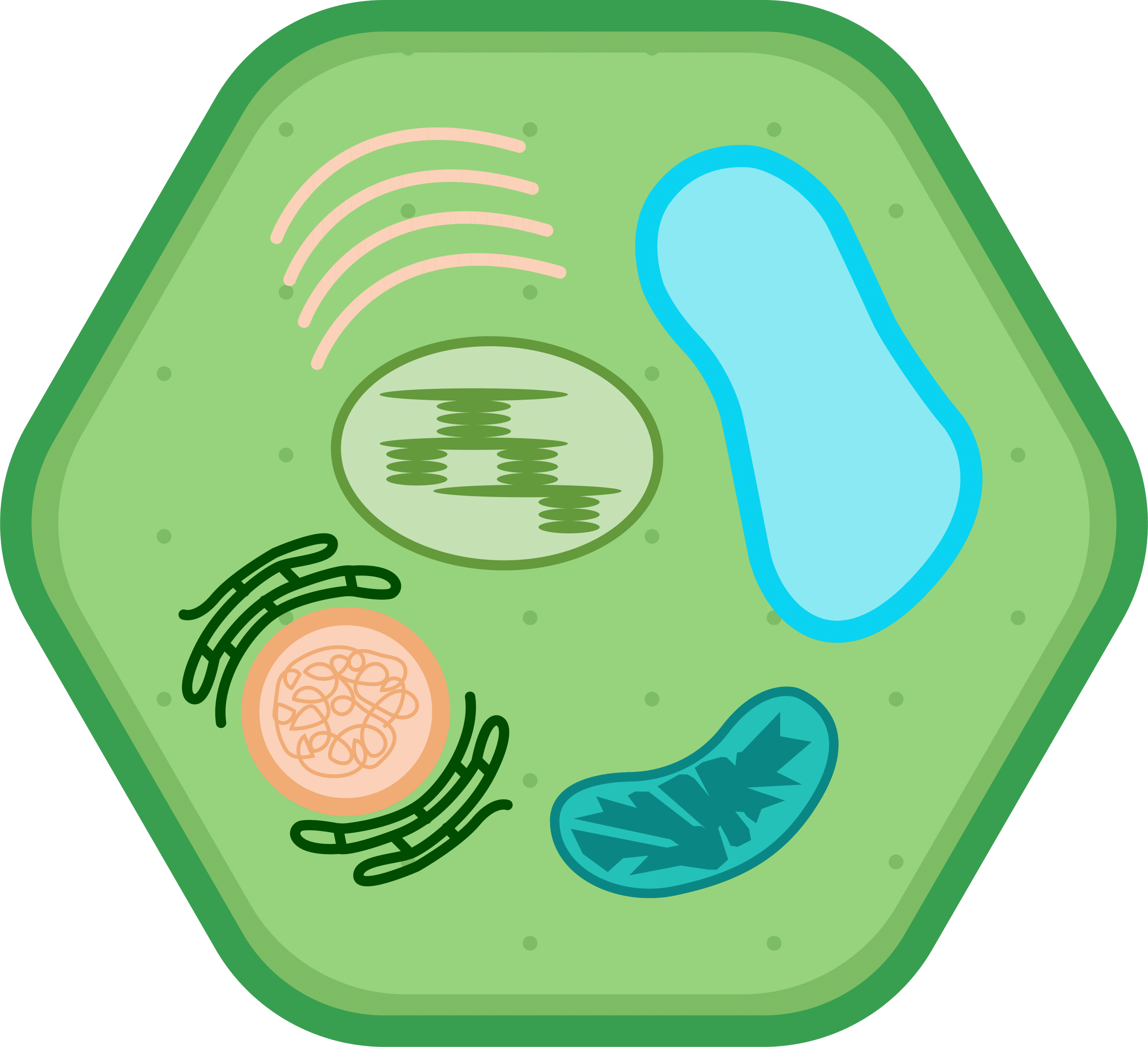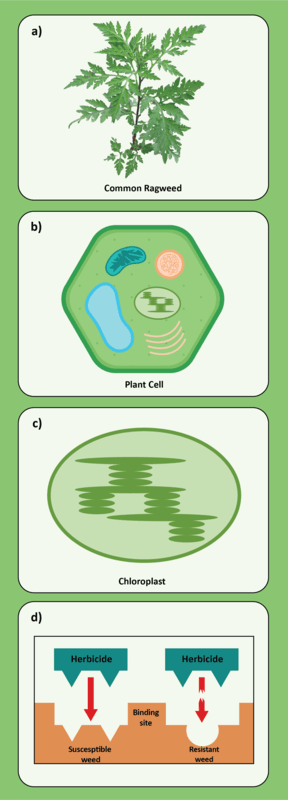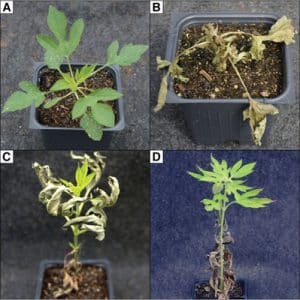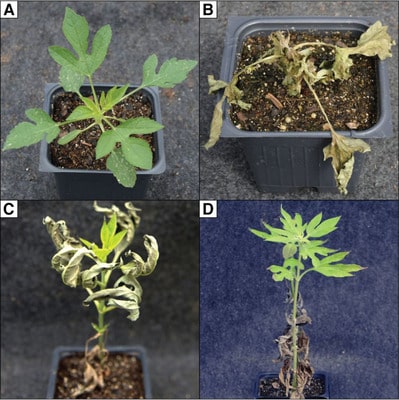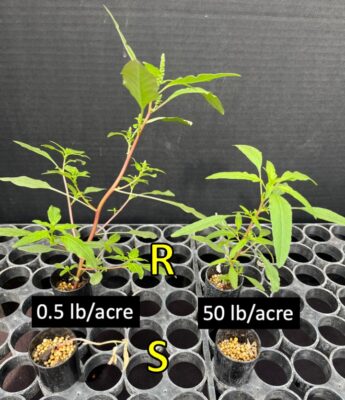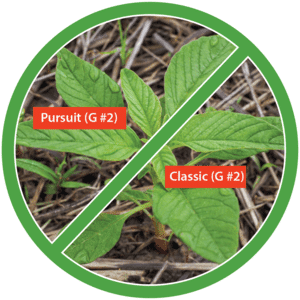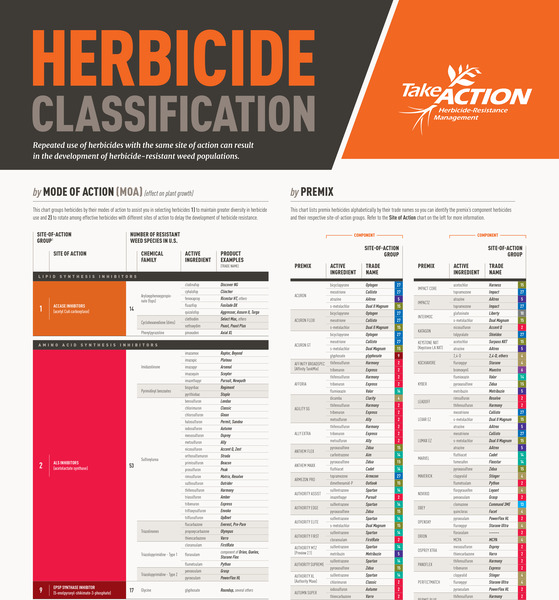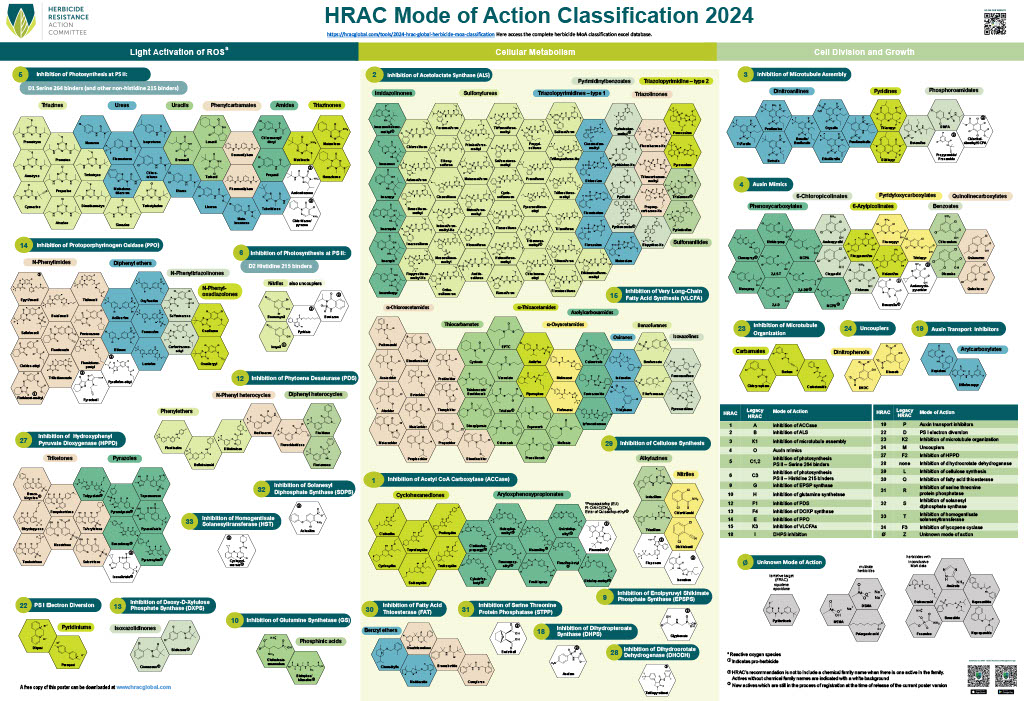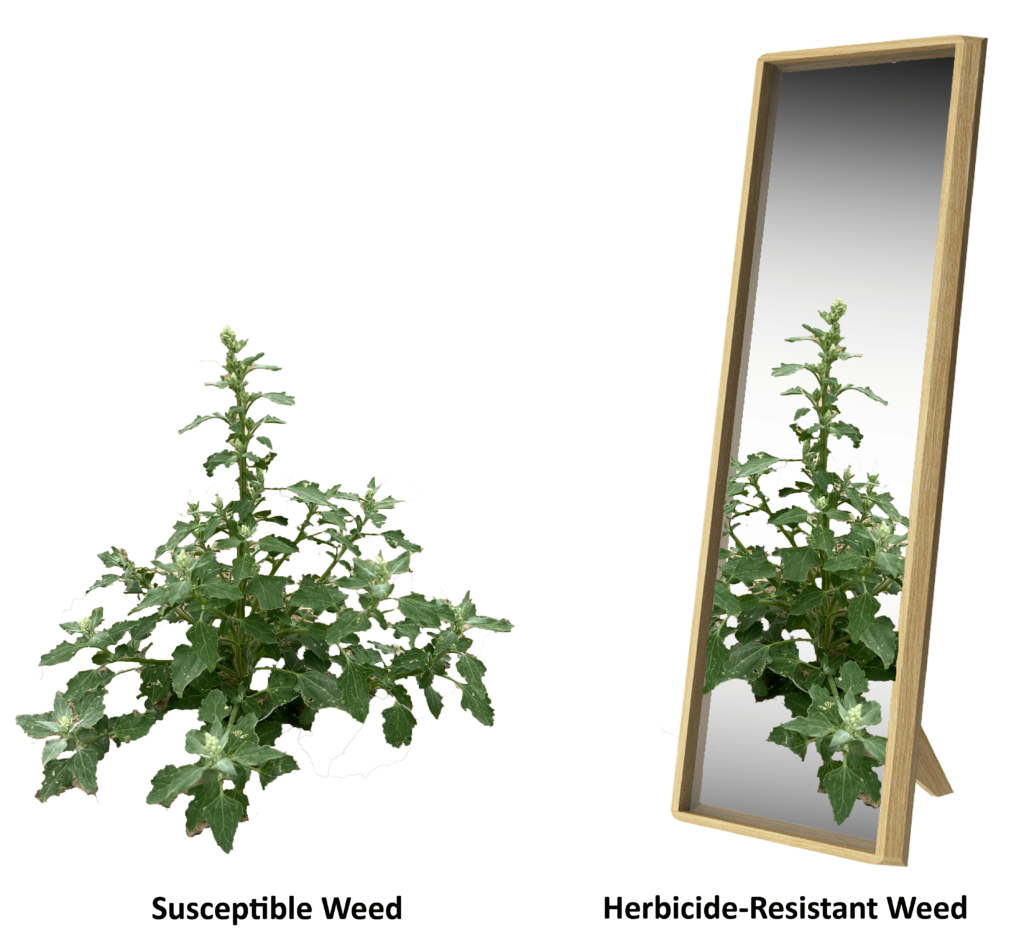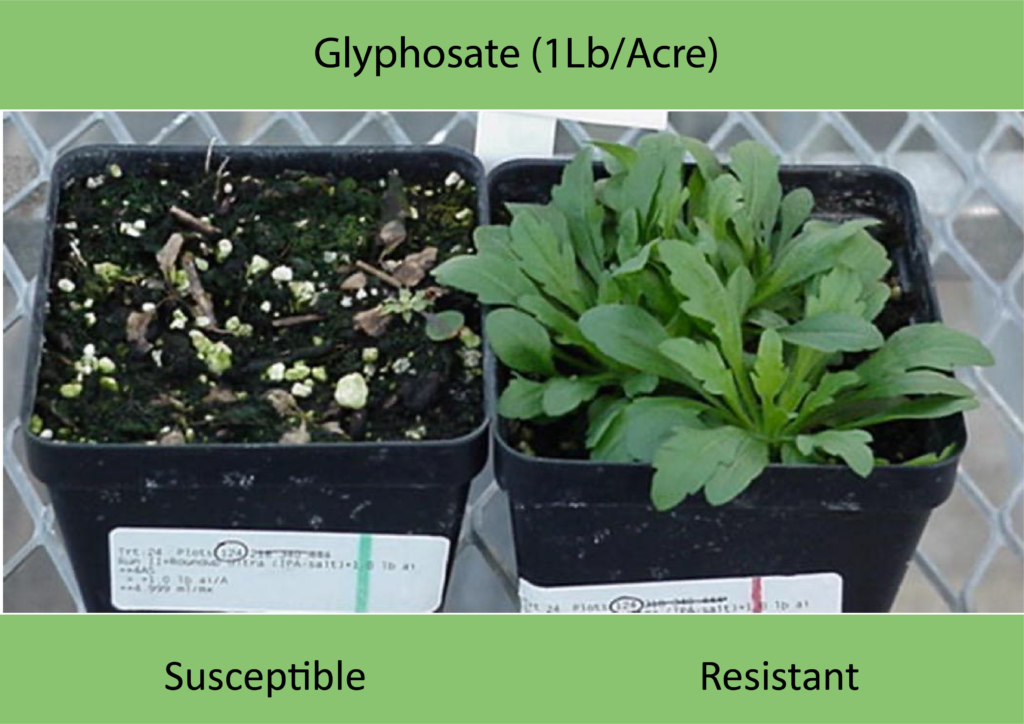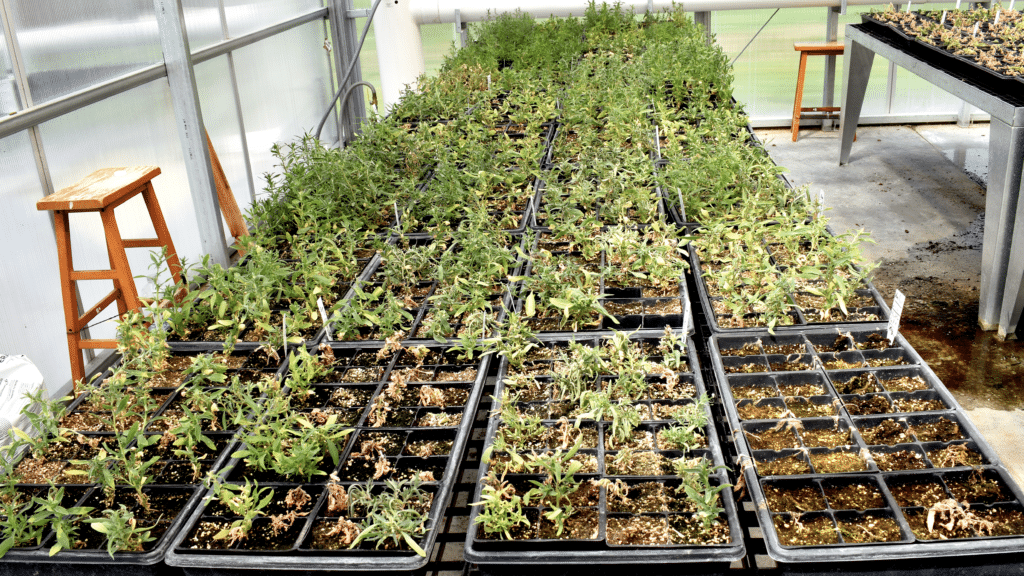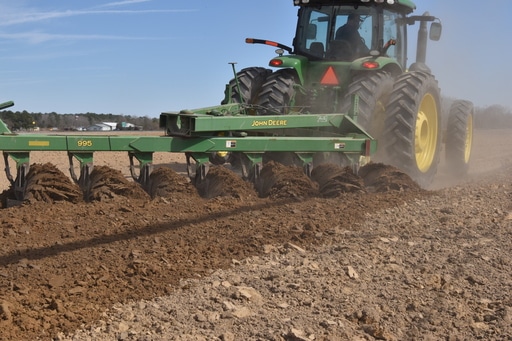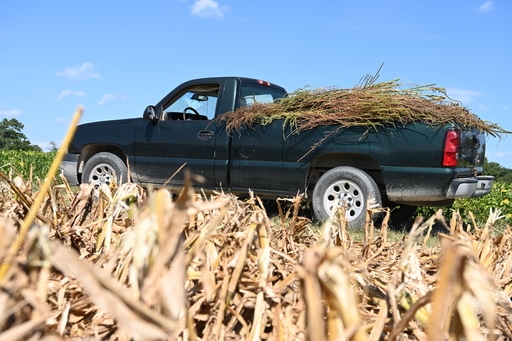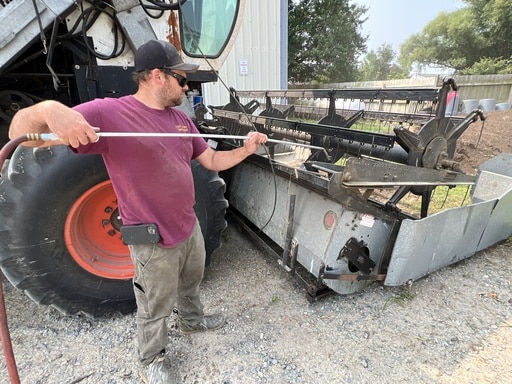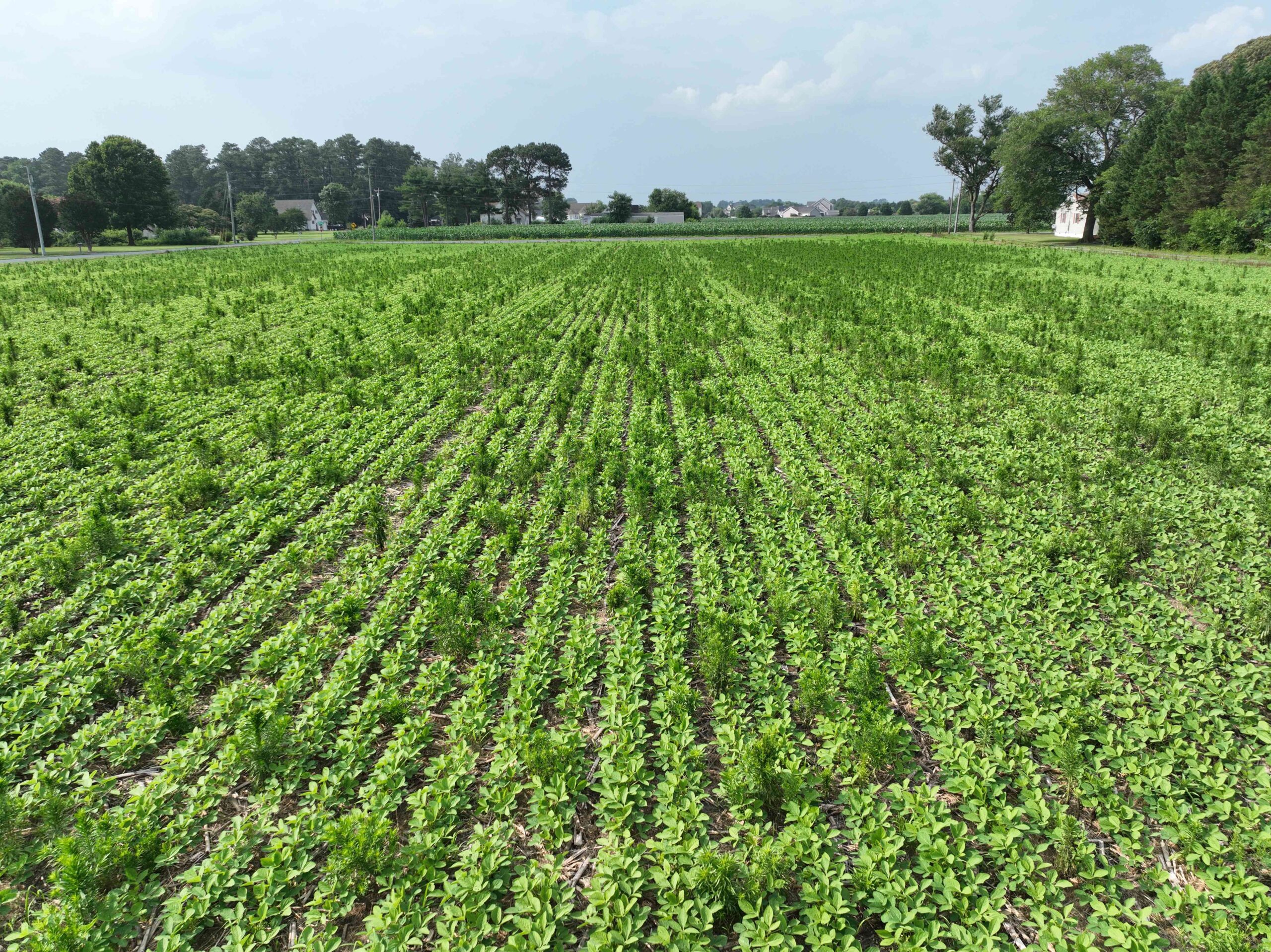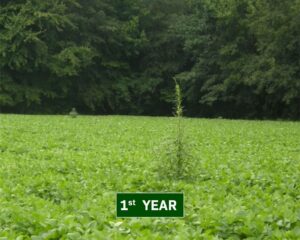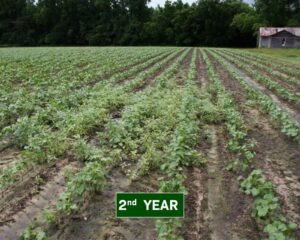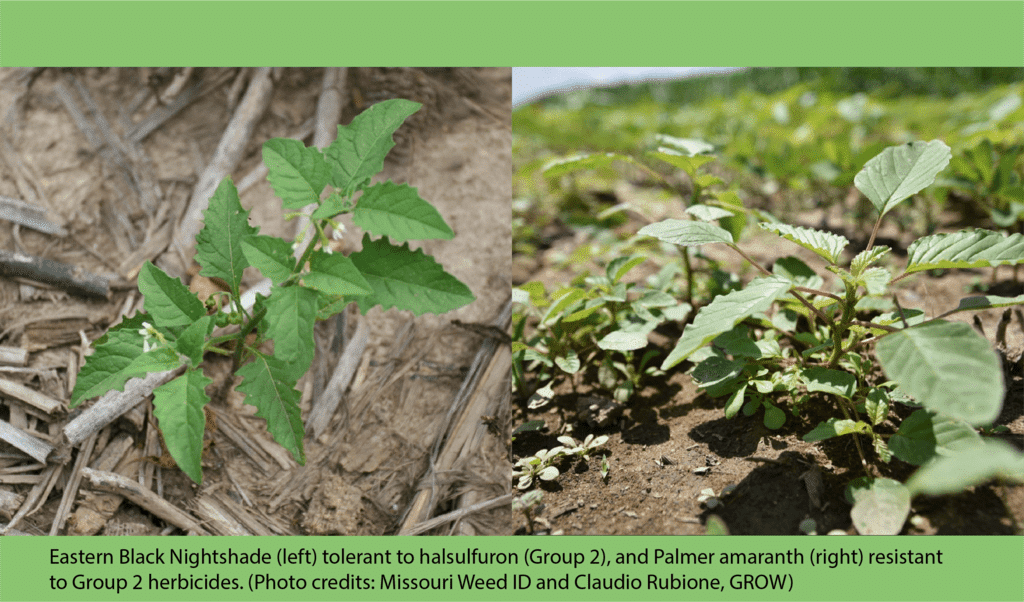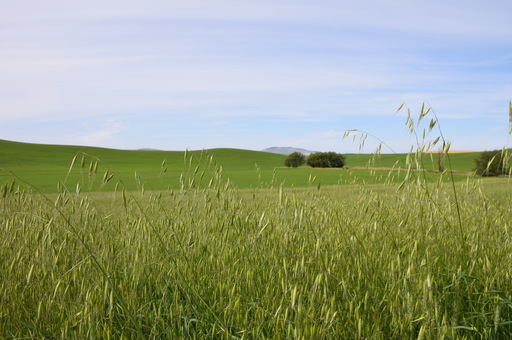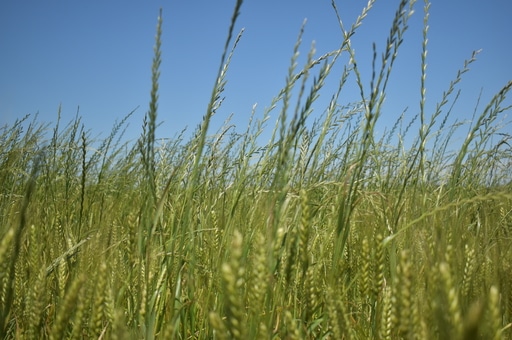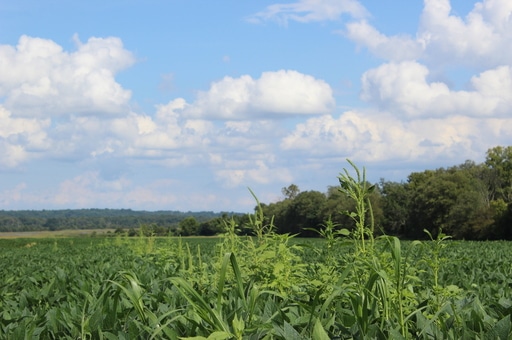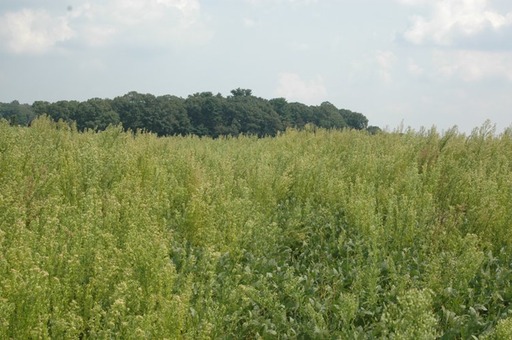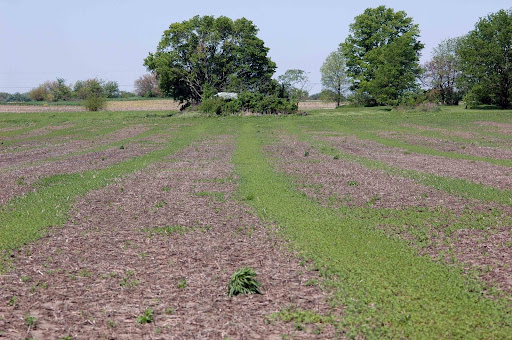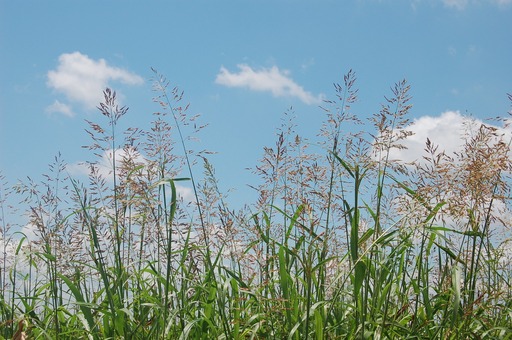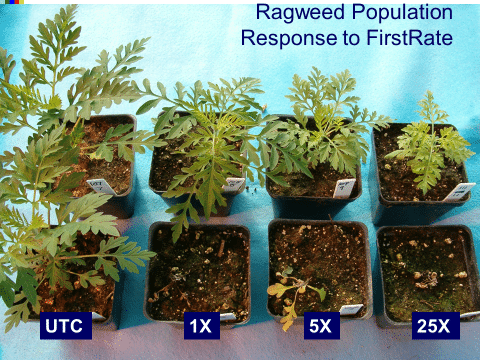Abutilon theophrasti Medik.
Also known as: butter weed, buttonweed, butterprint, or elephant ear
Velvetleaf is a summer annual species in the Malvaceae (mallow) family. The mallow family also includes cotton. Velvetleaf is native to South Asia and was brought to the United States to be a fiber source in the early 18th century and has since become naturalized in every state except Alaska and Hawaii. It is a common pest in spring-seeded row crops, as it has a similar life cycle, emerging in the spring and directly competing with crops. Control of this plant costs farmers millions of dollars each year in corn, soybean, and cotton fields in the United States. Velvetleaf is considered a noxious weed in Colorado, Iowa, Oregon, and Washington and is among the top 10 most common species based on a survey by the Weed Science Society of America (WSSA). Velvetleaf has been shown to have an allelopathic effect (the ability to chemically inhibit another from germinating) on several crops, including corn, soybean, wheat, alfalfa, and turnip.
Identifying Features
Velvetleaf is a large-seeded broadleaf summer annual. This weed can be commonly found growing in agricultural lands, disturbed areas, ditches, and along roadsides. The cotyledons of velvetleaf are heart shaped. Velvetleaf’s true leaves are also large (4 to 8-inch diameter), heart shaped, alternate, veins spreading from petiole (leaf stalk) to leaf tip, and have bluntly toothed edges. The petioles are long and covered in fine hair. Leaves and stems exude a distinctive unpleasant odor when rubbed or crushed. Leaves and stems are covered in short, fine hairs that are soft to the touch at all growth stages, giving this species its common name.
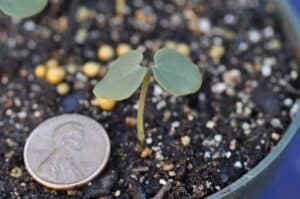
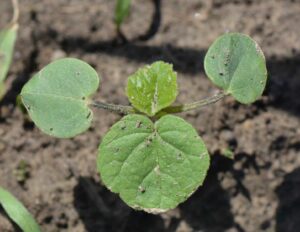
At maturity, velvetleaf stands between two and seven feet tall. Its root system is a shallow taproot that is known to form beneficial associations with fungi. Flowers are yellow or yellow-orange and have 5 petals. After pollination a cup-shaped seed capsule emerges, consisting of a ring of fused carpels, each containing 1 to 3 seeds. Seed capsules are green as seeds form and end up brown to black as the seeds mature. Seed capsules will eject the mature seeds a short distance from the plant as the plant dries down.

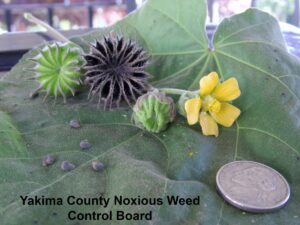
Seed Production
Each of the 70 to 200 seed capsules on an average velvetleaf plant can contain between 15 and 45 gray or brown kidney- or heart-shaped seeds. In an area without crop competition, a velvetleaf plant can produce 700 to 17,000 seeds. When velvetleaf grows in competition with a crop, seed production is reduced and only 1,000 to 2,000 seeds will be produced per plant. Velvetleaf seeds are covered in a hard coat that allows them to remain dormant and viable for decades in the soil. Over time, the seed coat weakens and eventually cracks, allowing water to be absorbed and the germination process to begin. Most velvetleaf seeds emerge from within one inch of the soil surface, but they are relatively large and have been shown to emerge from more than three inches of soil.
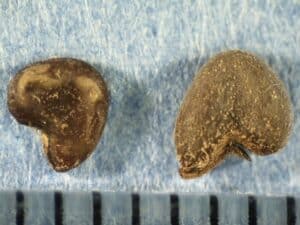
Herbicide-Resistance
Resistance has been reported to atrazine (Group 5, Photosystem II inhibitor) in Maryland (1984), Wisconsin (1990), Minnesota (1991), and Michigan (2004).
Integrated Weed Management Options
Implementing an Integrated Weed Management (IWM) plan is the best strategy when trying to control velvetleaf. Also velvetleaf seeds are commonly eaten by many types of insects and rodents, which helps keep populations under control and is likely enhanced by diversifying crop systems to provide better habitat for wildlife.
Research has shown that including cover crops, crop rotation and diversity, timely herbicide applications, tillage and other cultural practices can result in a reduction in the number of velvetleaf present in a cash crop. The most important factor is to implement the control method when the weed is most vulnerable. There are a few proven practices for controlling velvetleaf:
Cover Crops
Cover crops have shown to be beneficial in reducing the number of velvetleaf seeds that germinate and emerge. An established winter cover crop, one that does not winter kill, can outcompete newly emerged velvetleaf seedlings for sunlight, water, nutrients and space. The allelopathic effects of cereal rye have also been shown to inhibit velvetleaf germination in the greenhouse. Small grain cover crops or small grain/legume mixes that produce 5000 lb/ac of biomass or more will provide the most weed suppression.
Crop Rotation
Crop rotation has been found to help reduce the velvetleaf population density, resulting in lower weed biomass and fewer weed seeds produced by the end of the season. By adding a winter grain or perennial forage crop to the rotation, a competitive crop will already be present at the typical time that velvetleaf emerges in mid-spring, and earlier harvest of these crops allows escapes to be controlled by other methods like herbicide passes, competition with the growing crop before they go to seed. Both examples are crops that will not have the same life cycle as the velvetleaf, thus interrupting its establishment and later reproduction. The more diversity in the rotation the better, and that includes growing both grass and broadleaf crops.
Tillage
Tillage has also proven to be a viable method of controlling velvetleaf before it emerges. Periodic deep inversion tillage, such as use of a moldboard plow every four to five years, buries seeds deep in the soil profile where they will not be able to successfully germinate and emerge. Repeated tillage can return previously buried seeds to the surface, however. Shallower forms of tillage may or may not bury velvetleaf seeds deep enough to prevent germination. Shallow tillage may also bury seeds below what many seed predators can access. Inter-row cultivation can destroy seedlings that emerge soon after planting if it cuts the plant at or just below the soil surface.
Herbicide Control Options
The best herbicide application program to control velvetleaf is a combination of an effective residual herbicide at planting, and a POST herbicide application when velvetleaf is <4 inches tall. For wide rows, poor growing conditions, or less competitive crops like cotton, include a residual herbicide in the POST application.
Corn
Where velvetleaf has emerged before burndown applications, glyphosate, 2,4-D, saflufenacil (Sharpen), carfentrazone-ethyl (Aim), fluthiacet-methyl (Cadet), flumiclorac (Resource) or paraquat (Gramoxone) can be used. Preemergence or preplant herbicides options for velvetleaf prevention are atrazine, mesotrione, and isoxaflutole (Balance Flex). Postemergence control options include atrazine, mesotrione (Callisto products), topramezone (Impact and Armezon), fluthiacet-methyl (Cadet), flumiclorac (Resource), glyphosate in glyphosate resistant corn hybrids, glufosinate in glufosinate resistant corn hybrids, and Enlist One in 2,4-D resistant corn hybrids, and Enlist Duo in 2,4-D and glyphosate resistant corn hybrids.
Soybean
If emerged at the time of burndown, the herbicides listed above under corn can be used. Preemergence or preplant herbicide options are metribuzin, sulfentrazone (Authority products), clomazone (Command), pyroxasulfone (Zidua and Anthem products), flumioxazin (Valor), fluthiacet-methyl (Cadet), flumiclorac (Resource) and imazethapyr (Pursuit). Postemergence control options are fluthiacet-methyl (Cadet), flumiclorac (Resource) and herbicides like glyphosate in glyphosate resistant soybean varieties, and glufosinate in glufosinate resistant soybean varieties, and Enlist One in 2,4-D resistant soybean varieties and Enlist Duo in 2,4-D and glyphosate resistant soybean varieties.
Cotton
For burndown, herbicides like 2,4-D, glyphosate, glufosinate, salflufenacil (Sharpen) and paraquat (Gramaxone) could be used. Preemergence or preplant herbicide options are S-metolachlor (Dual Magnum), fomesafen (Flexstar or Reflex), clomazone (Command), and acetochlor (Warrant). Postemergence herbicides options are pyroxasulfone (Anthem products), S-metolachlor (Dual Magnum), glyphosate in glyphosate resistant cotton varieties, and glufosinate (Liberty) in glufosinate resistant cotton varieties.
Resources:
GROW’s Weed Management Planner
I Will Take Action Herbicide Look up Tool
I Will Take Action Weed Identification
USDA Plants Database. Abutilon theophrasti Medik. https://plants.usda.gov/plant-profile/ABTH, Accessed: November 8, 2024
Citations:
Barnes, Ethann R., et al. (2020) Control of Velvetleaf (Abutilon Theophrasti) at Two Heights with POST Herbicides in Nebraska Popcorn. Weed Technology, vol. 34, no. 4, pp. 560–67.
Bryson, C.T., Defelice, M.S. (2010) Weeds of the Midwestern United States and Central Canada. University of Georgia Press, pp. 239.
Heap, I. The International Herbicide-Resistant Weed Database. Online. Accessed: Friday, September 6, 2024. Available www.weedscience.org.
Loux, Mark M, et al. (2024) Ohio, Indiana, Illinois, and Missouri Weed Control Guide. The Ohio State University Extension Publishing.
McGinty, Joshua, et al. (2016) Weed Management in Texas Cotton. Texas A & M AgriLife Extension Service
Mohler CL, Teasdale JR, DiTommaso A (2021) Velvetleaf. Manage Weeds On Your Farm: A Guide to Ecological Strategies. USDA-SARE Handbook Series 16, Pages 374-377.
Spencer, N.R. Velvetleaf (1984) Abutilon theophrasti (malvaceae), history and economic impact in the United States. Econ Bot 38, 407–416.
Sprague, Christy. (2017) Velvetleaf Management in Soybeans. I Will Take Action.
United States. (1991) State Noxious-weed Seed Requirements Recognized in the Administration of the Federal Seed Act. Agricultural Marketing Service. Livestock & Seed Division. Seed Regulatory andTesting Branch. DIANE Publishing. Revised 2024.
Weed Science Society of America (WSSA). (2016). WSSA Survey Ranks Most Common and Most Troublesome Weeds in Broadleaf Crops, Fruits and Vegetables.
Author:
Amber Emmons, The Ohio State University
Editors:
Alyssa Essman, The Ohio State University
Eugene Law, The Ohio State University
Mark VanGessel, University of Delaware
Michael Flessner, Virginia Tech
Emily Unglesbee, GROW
